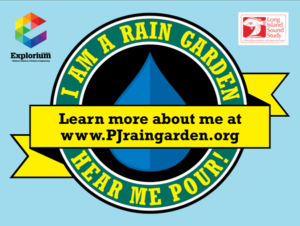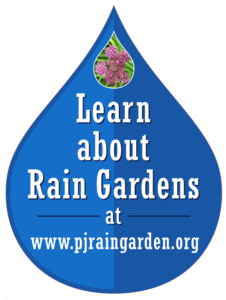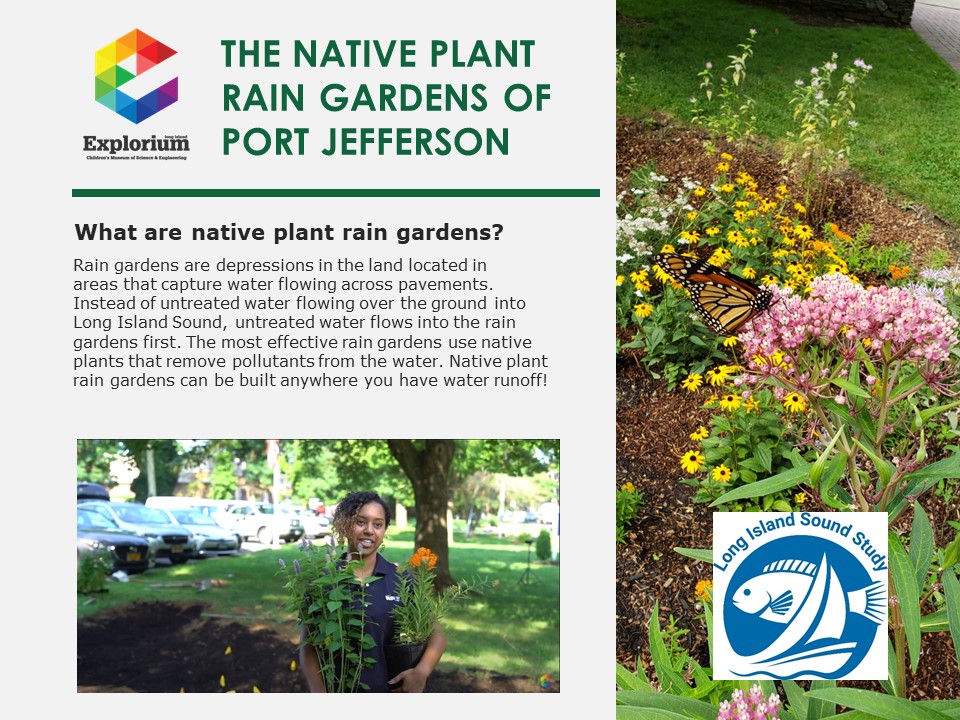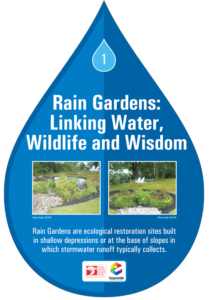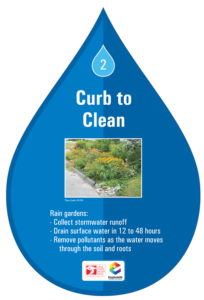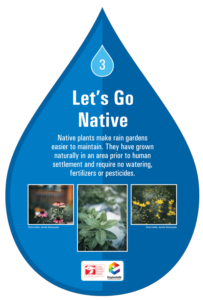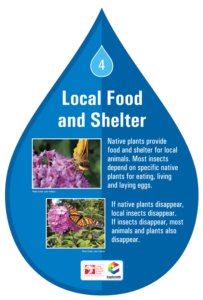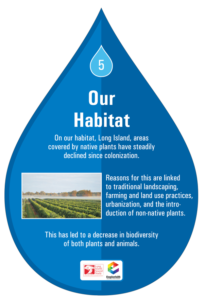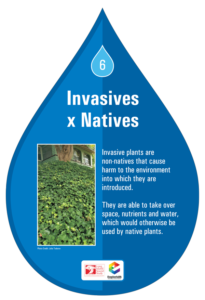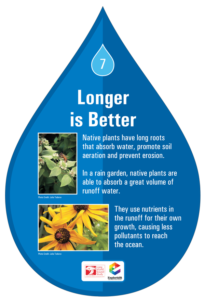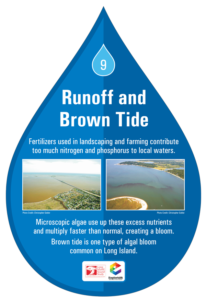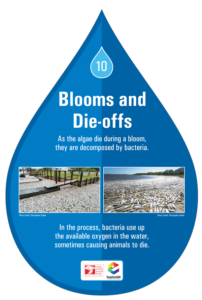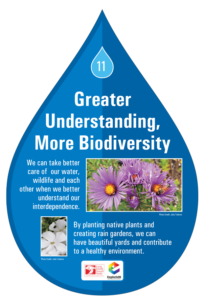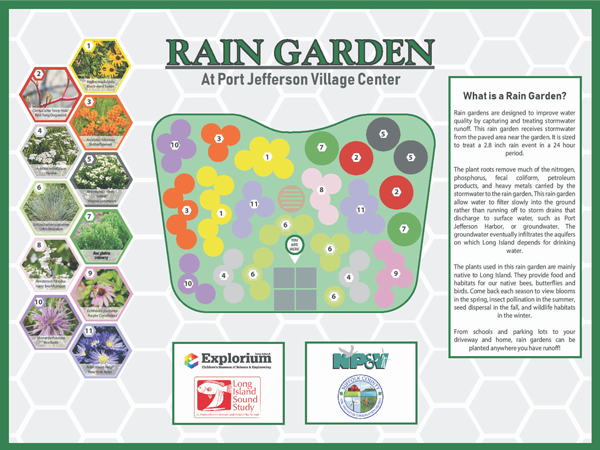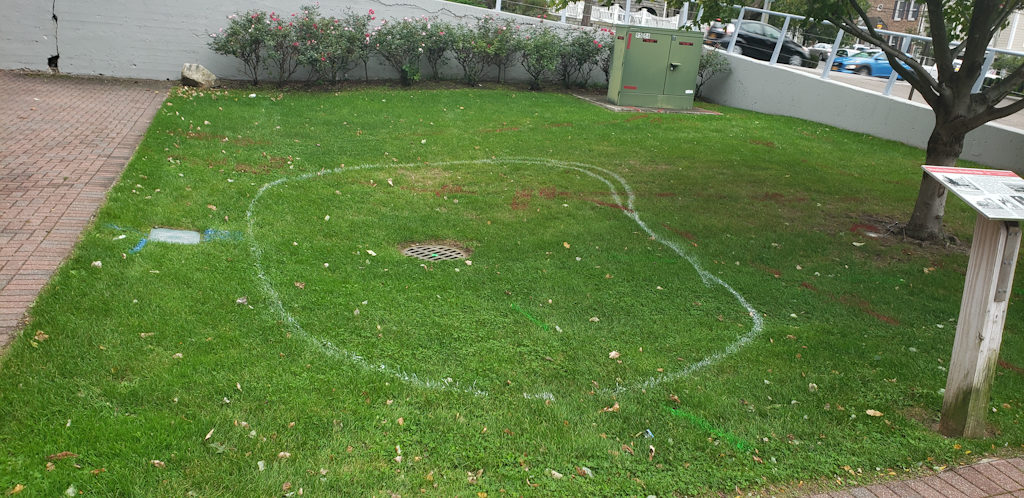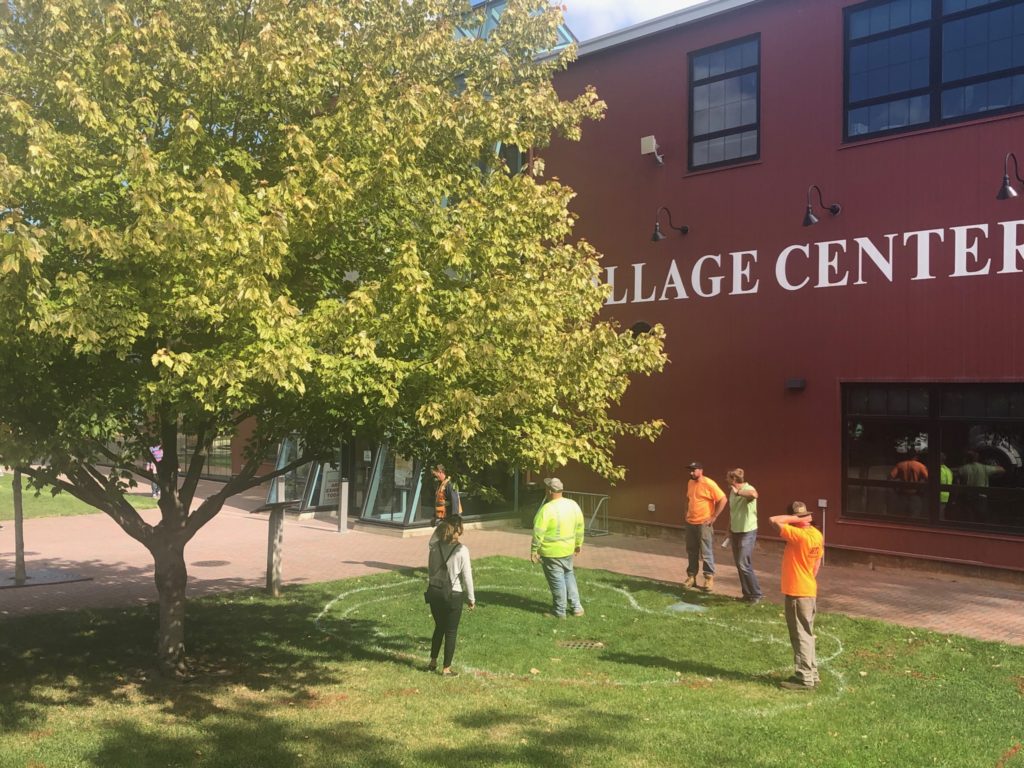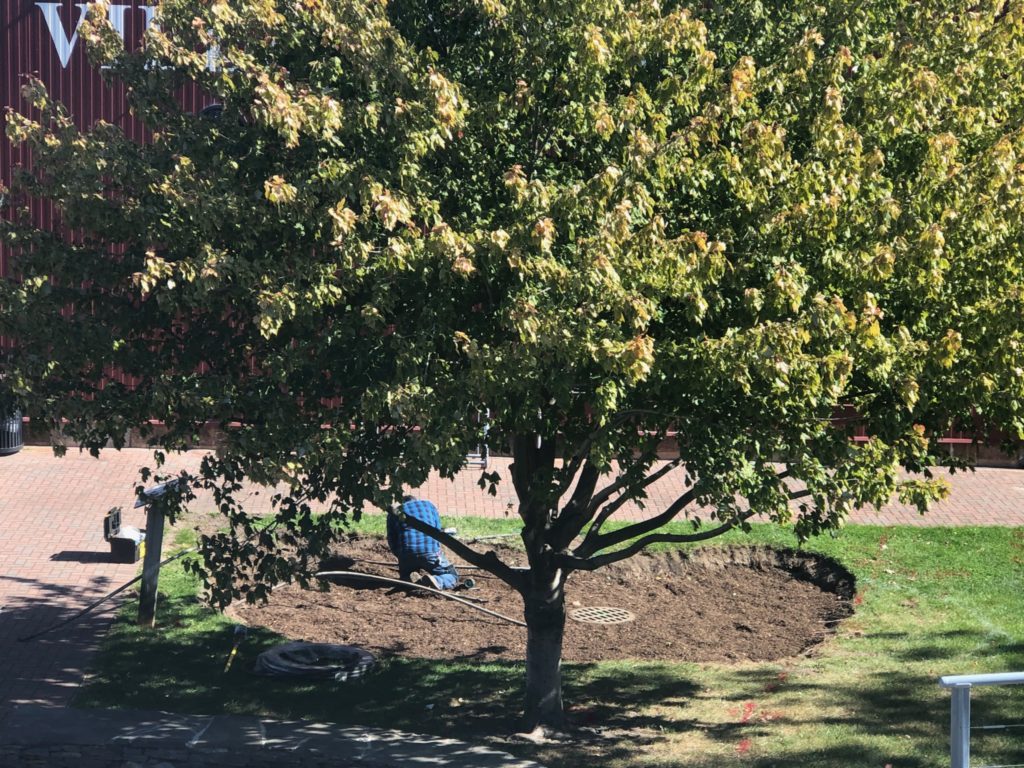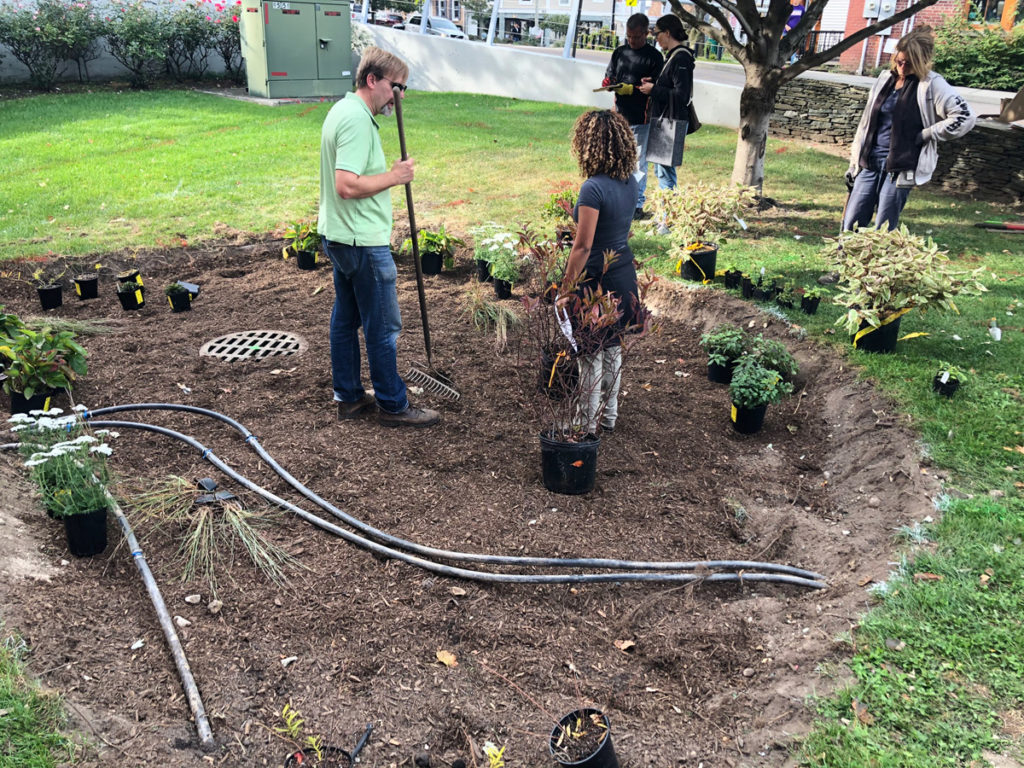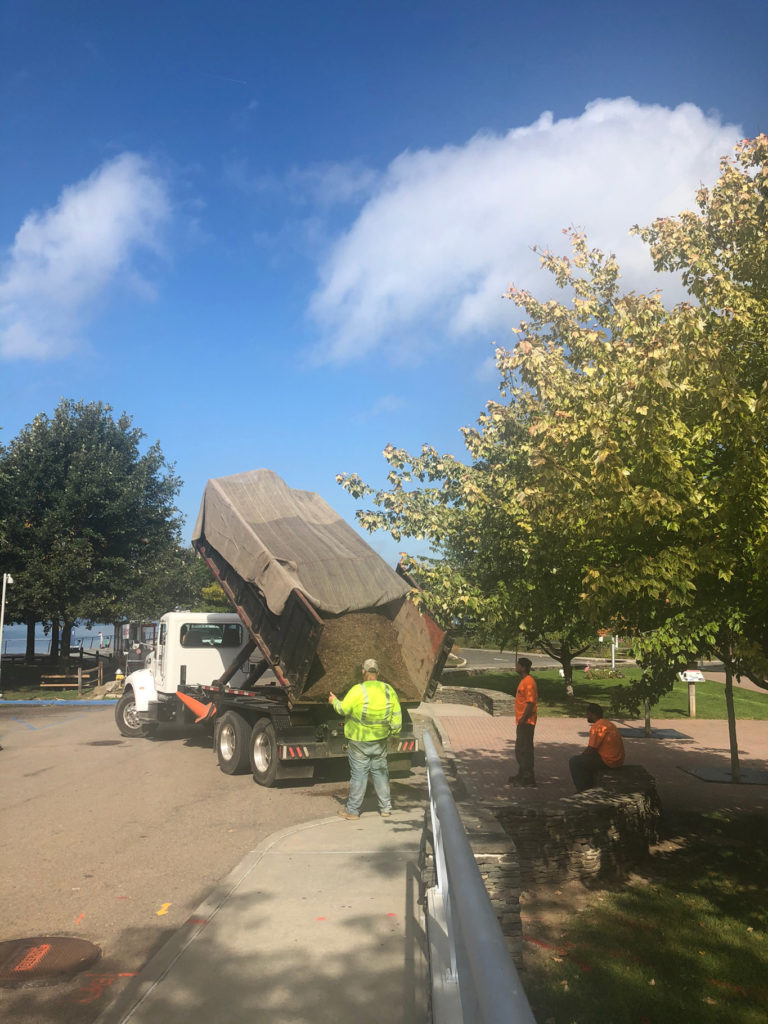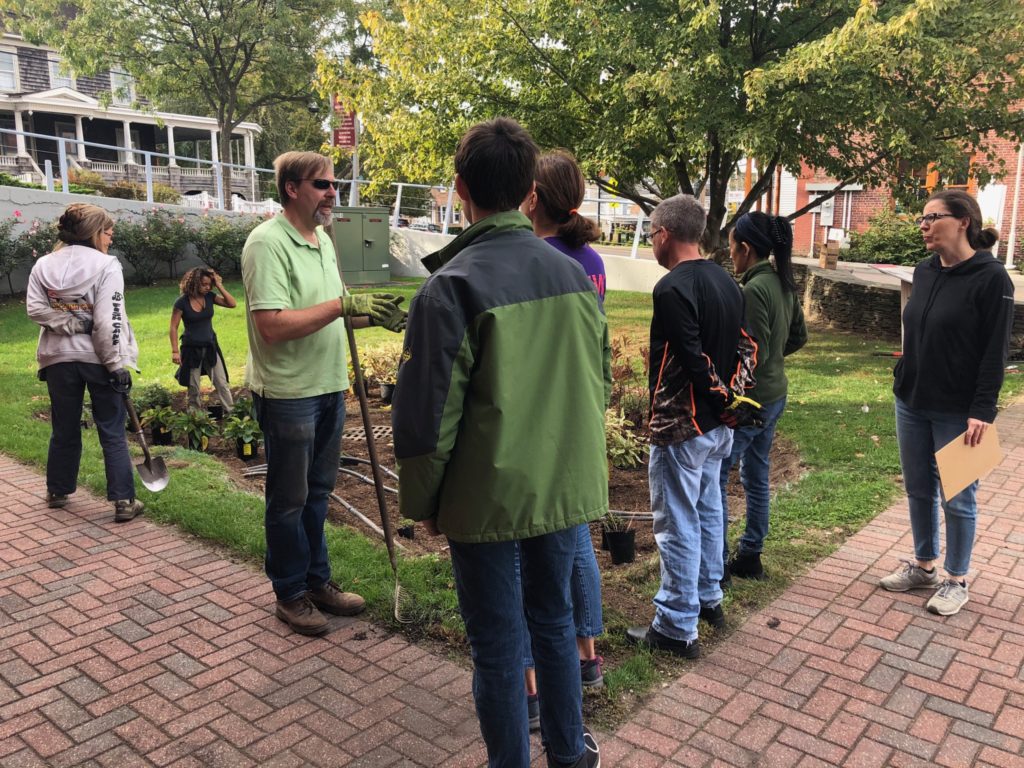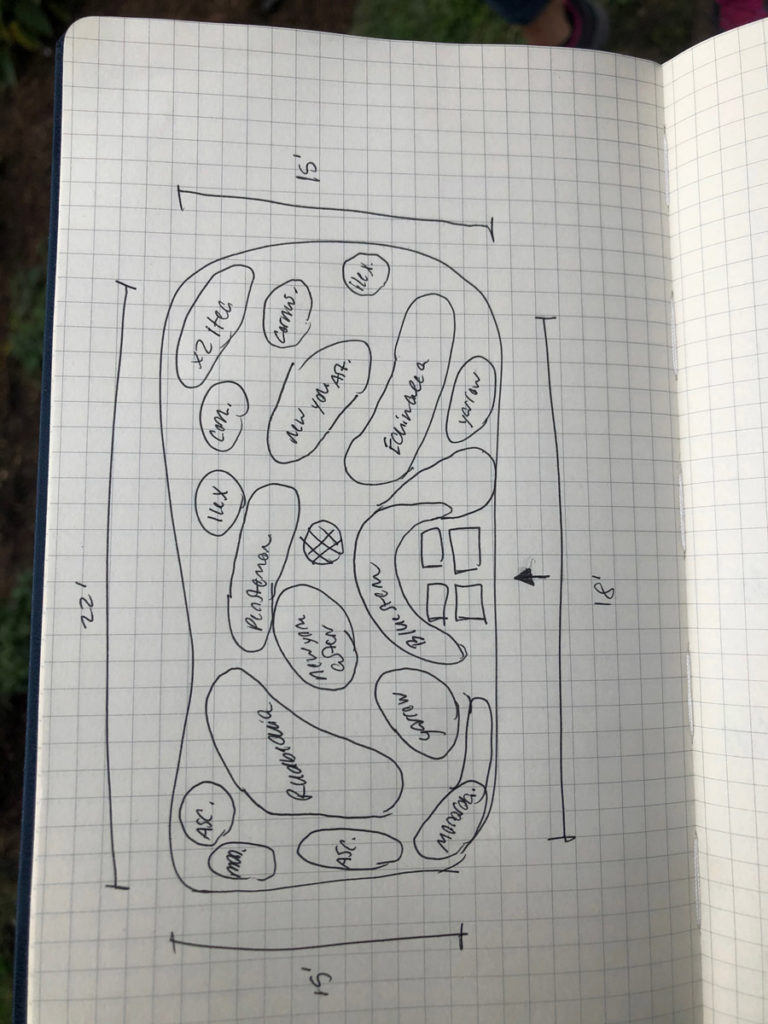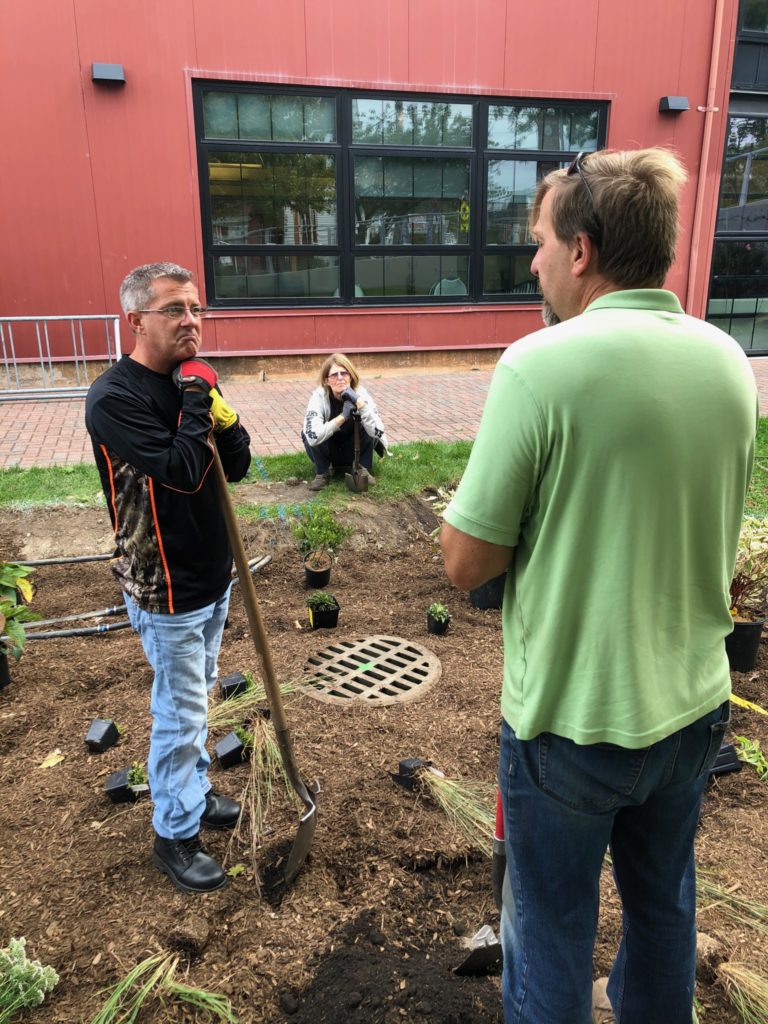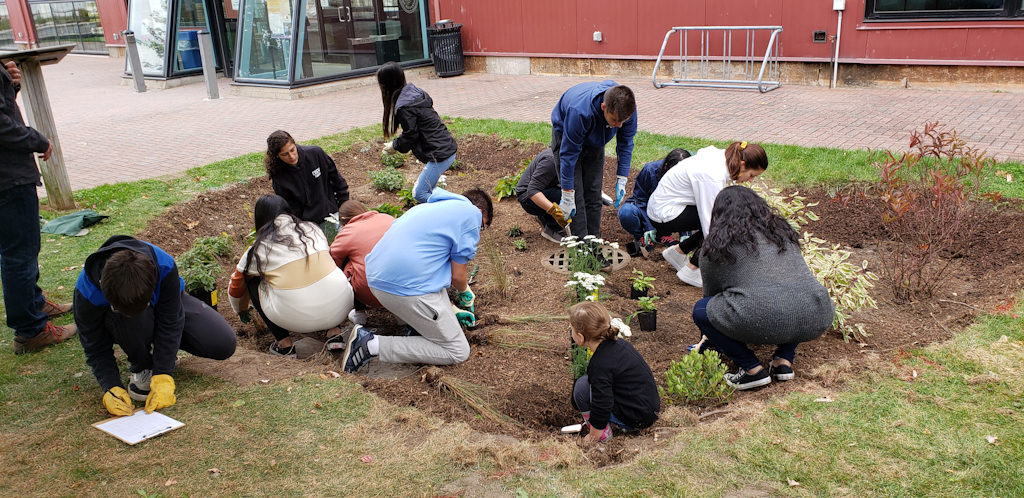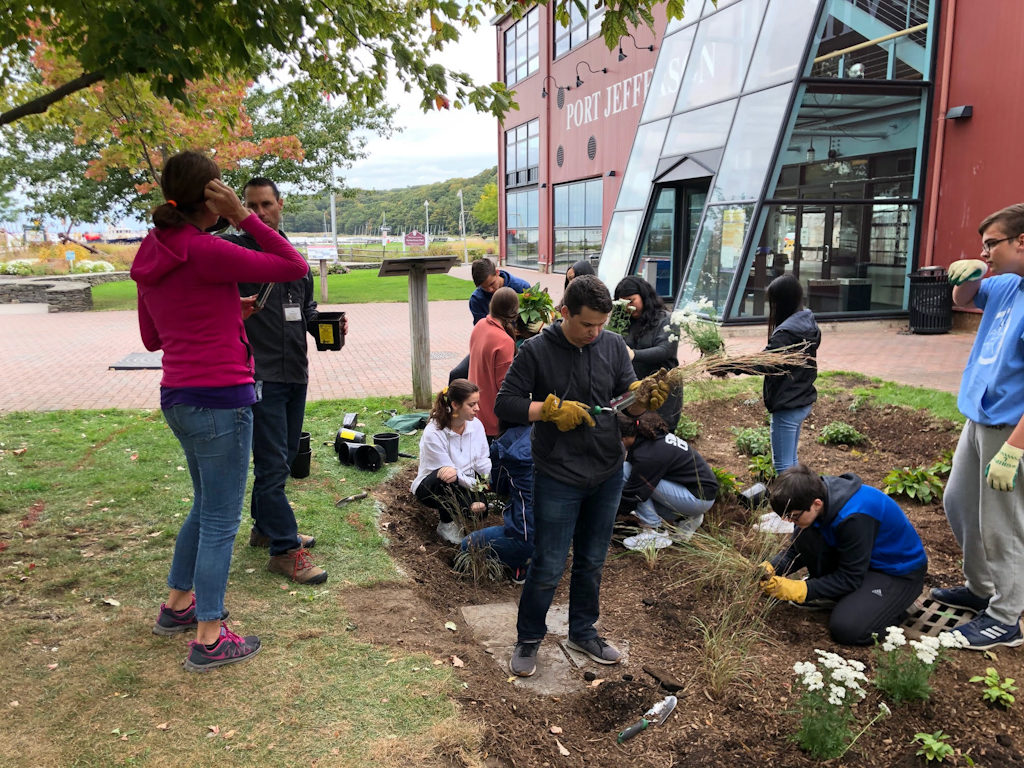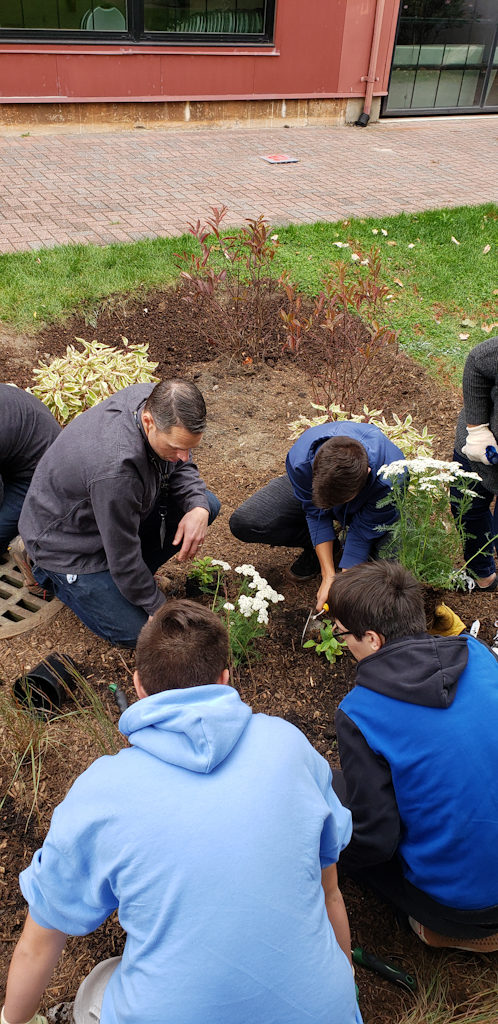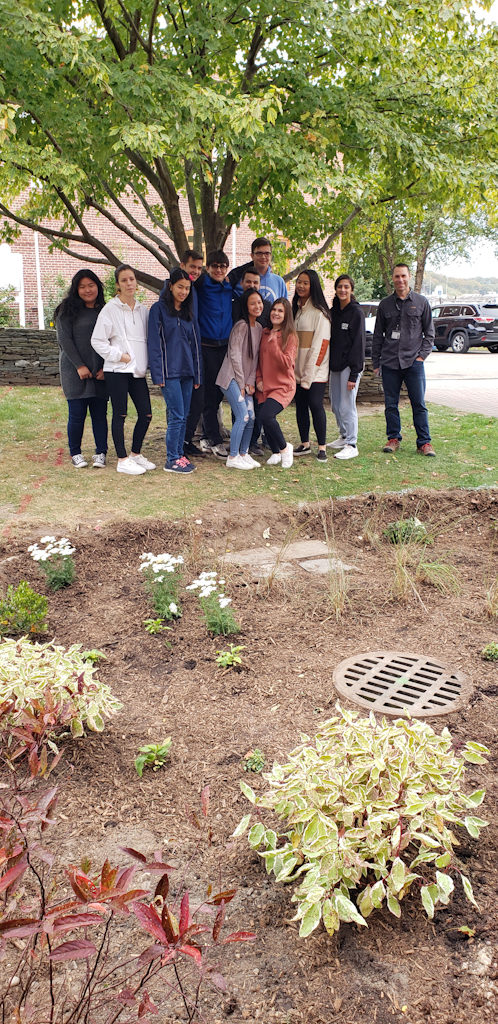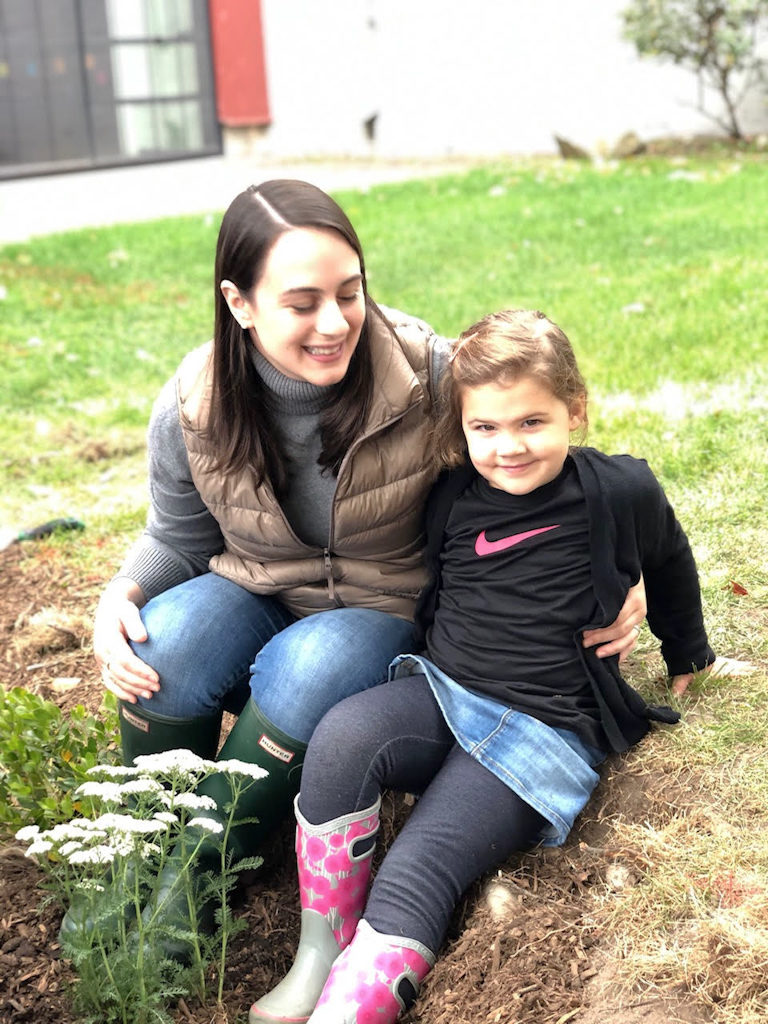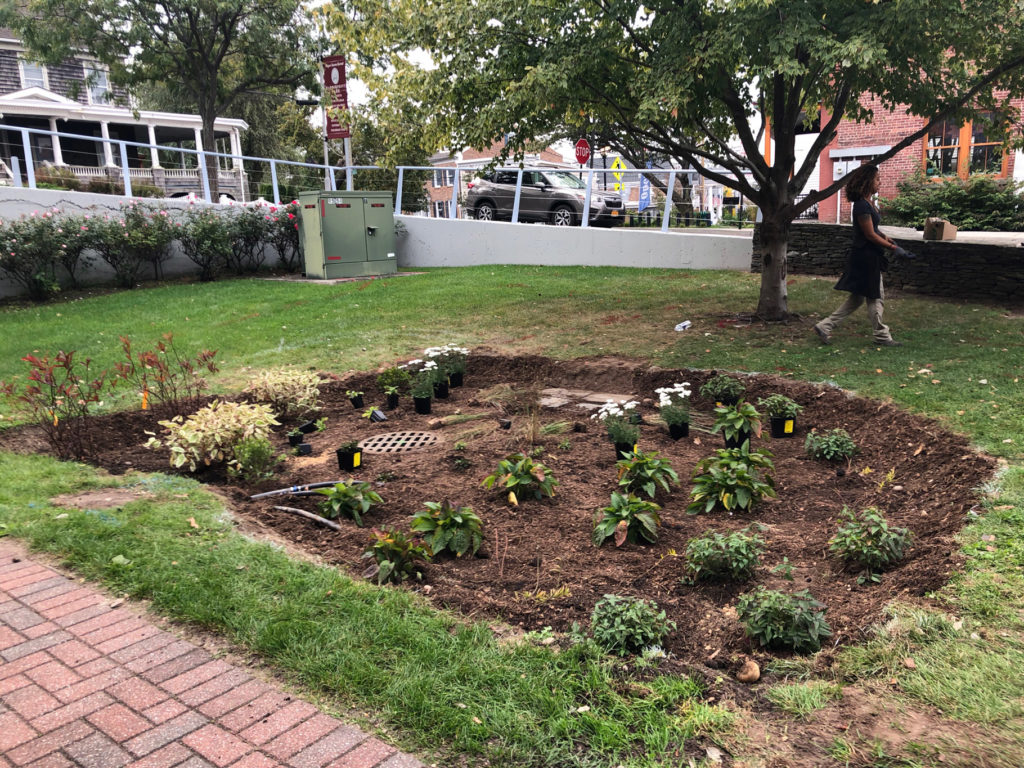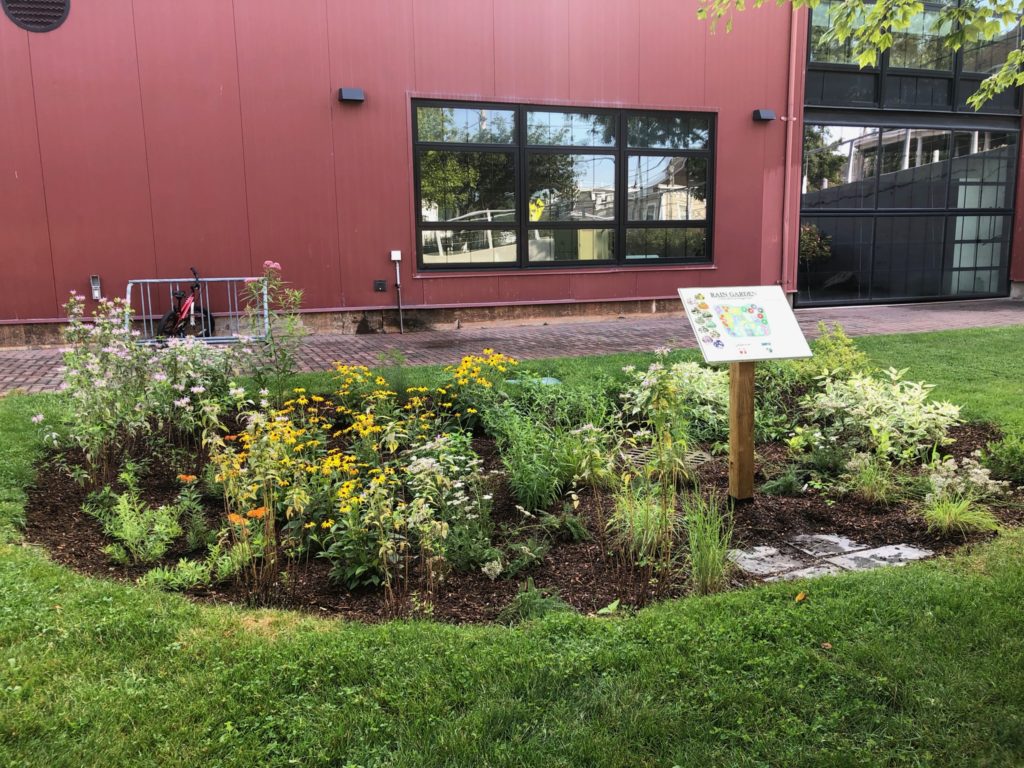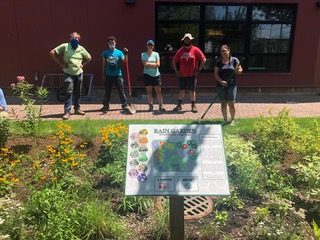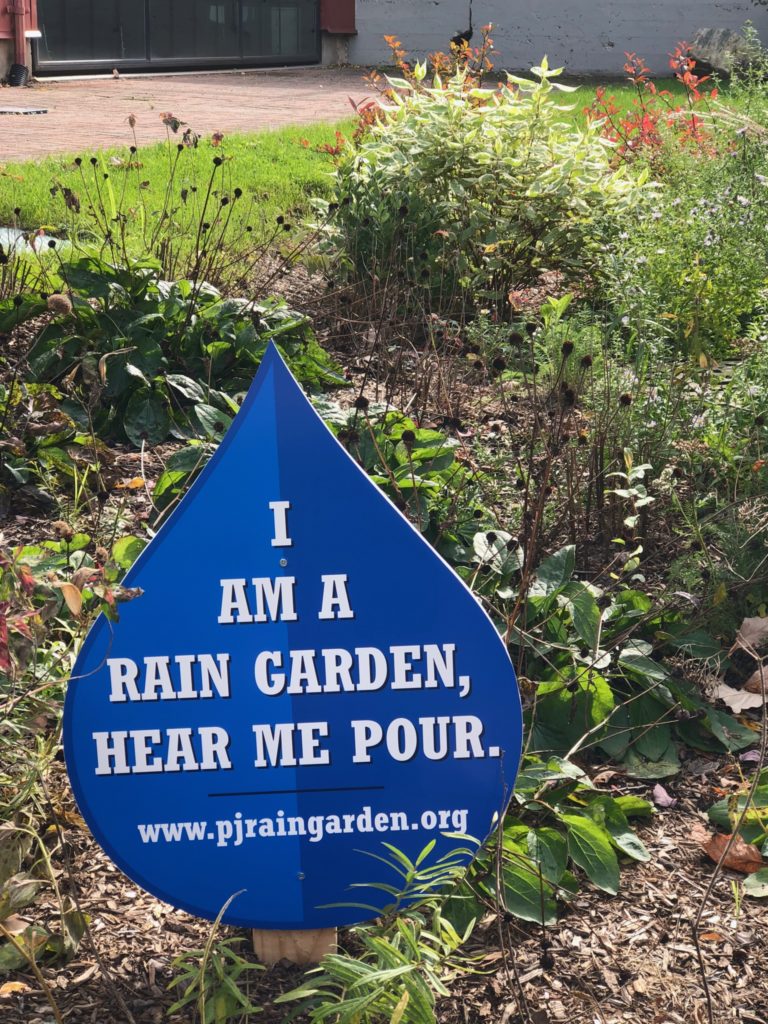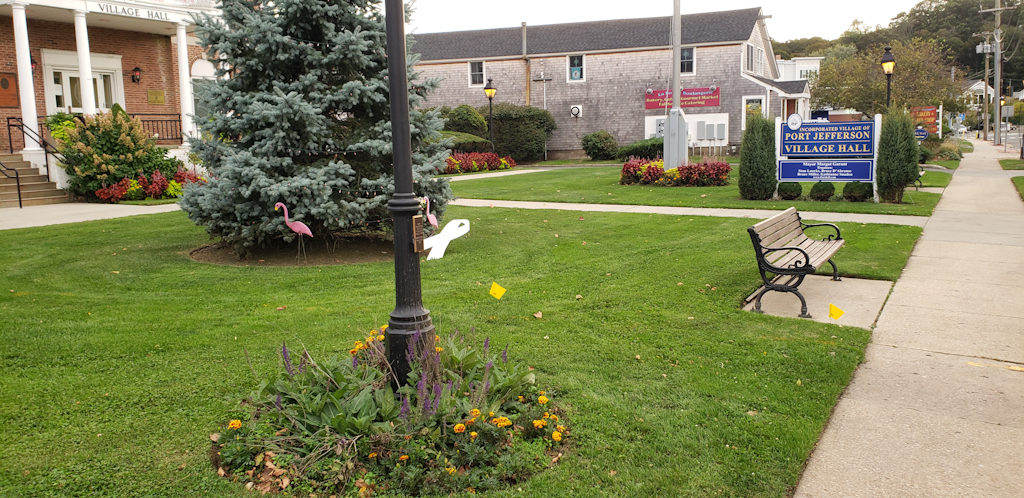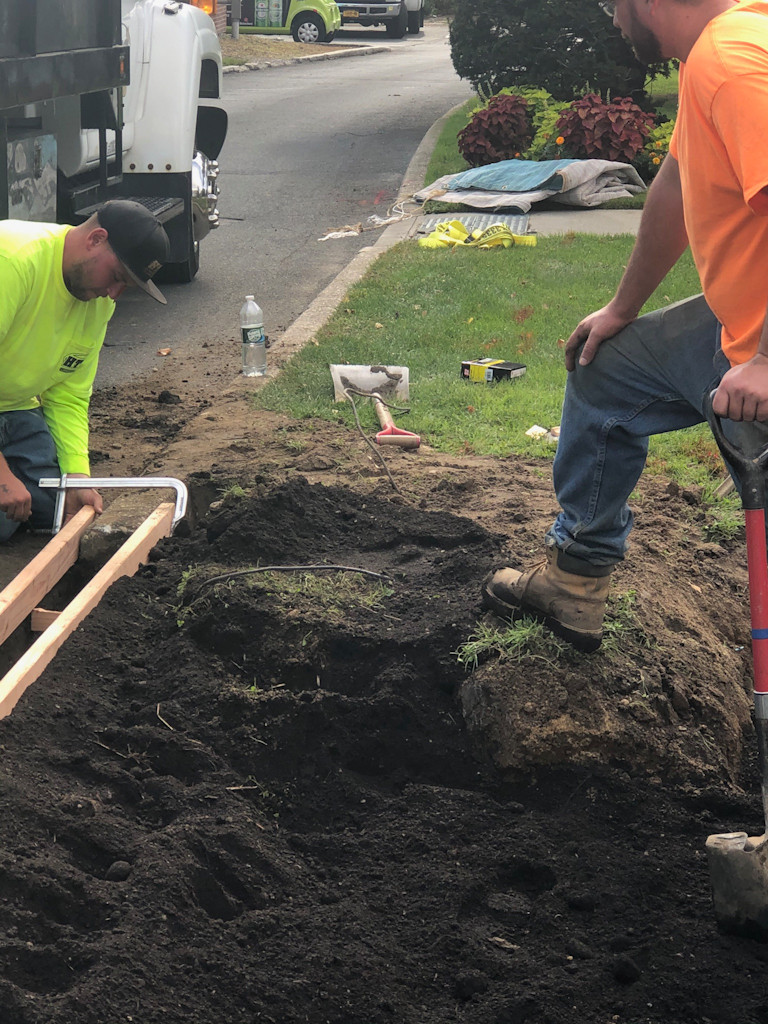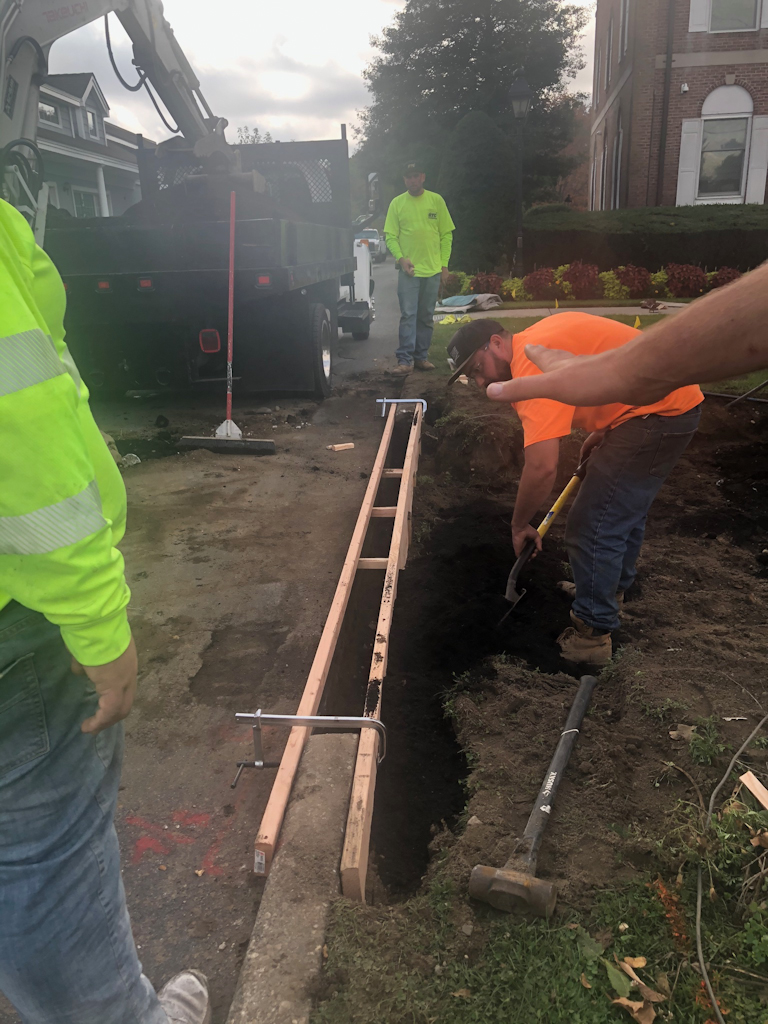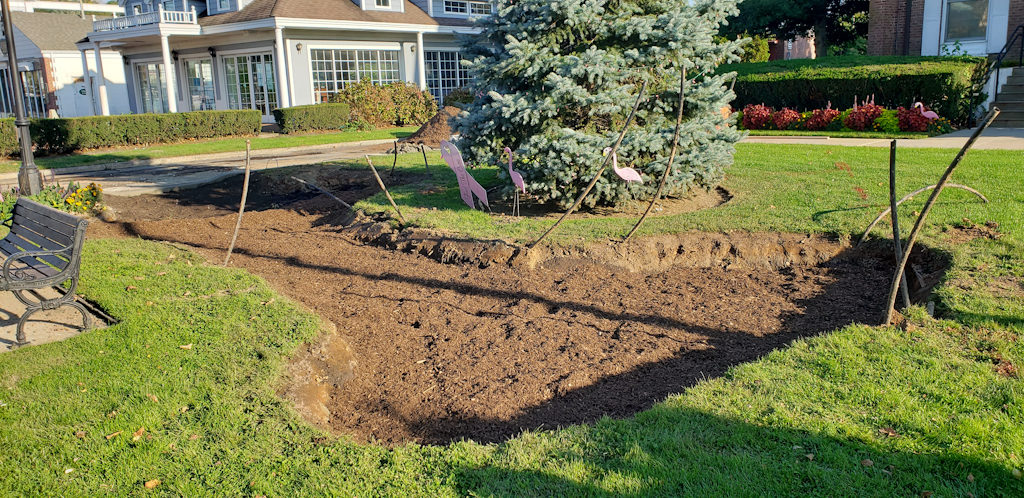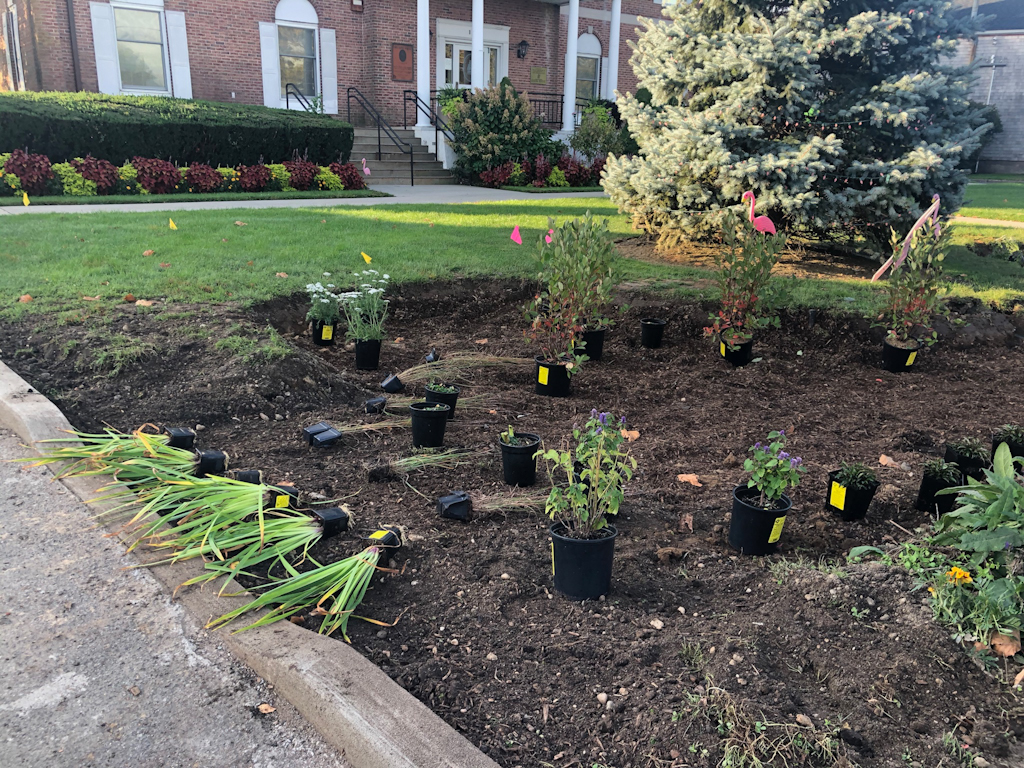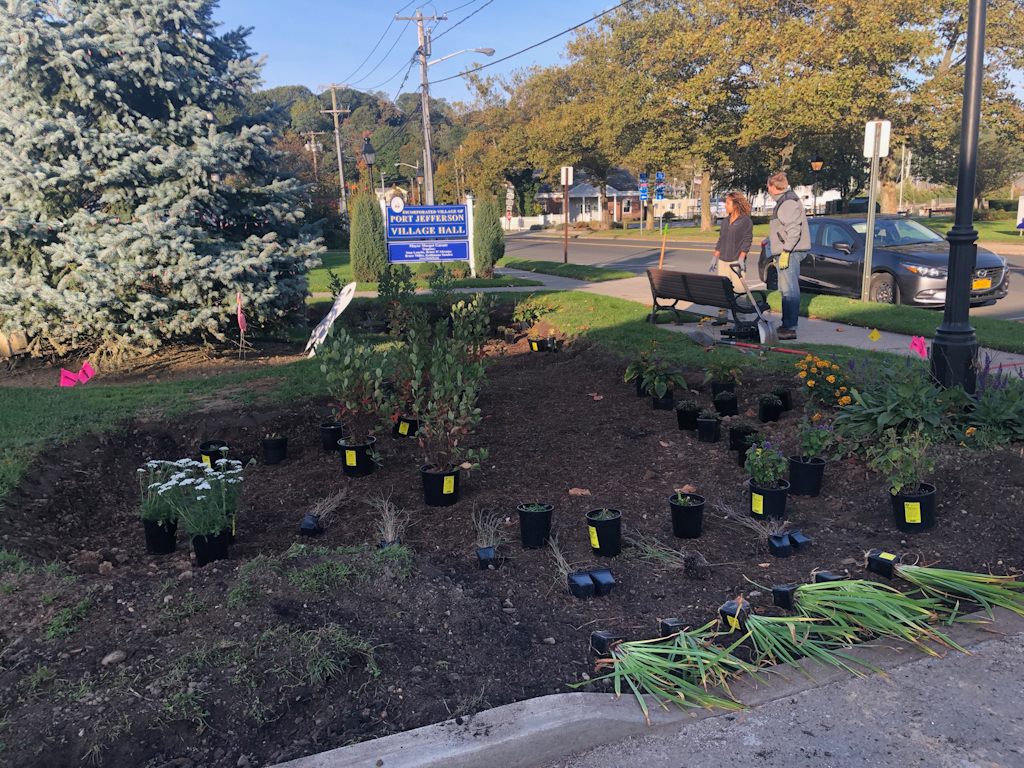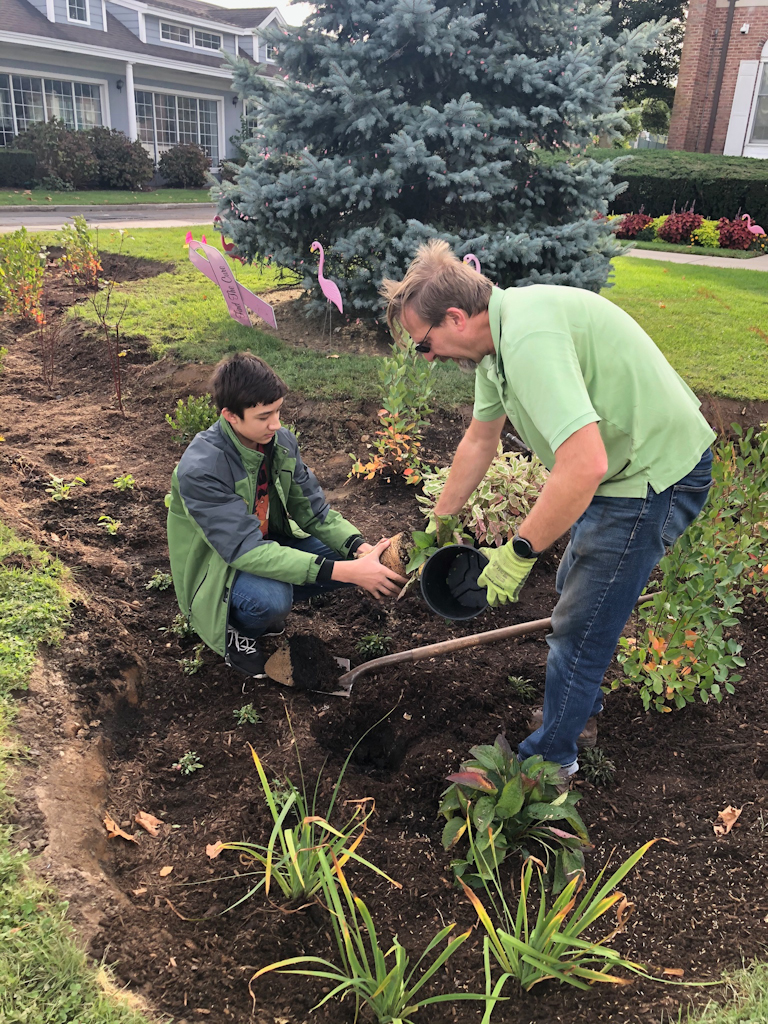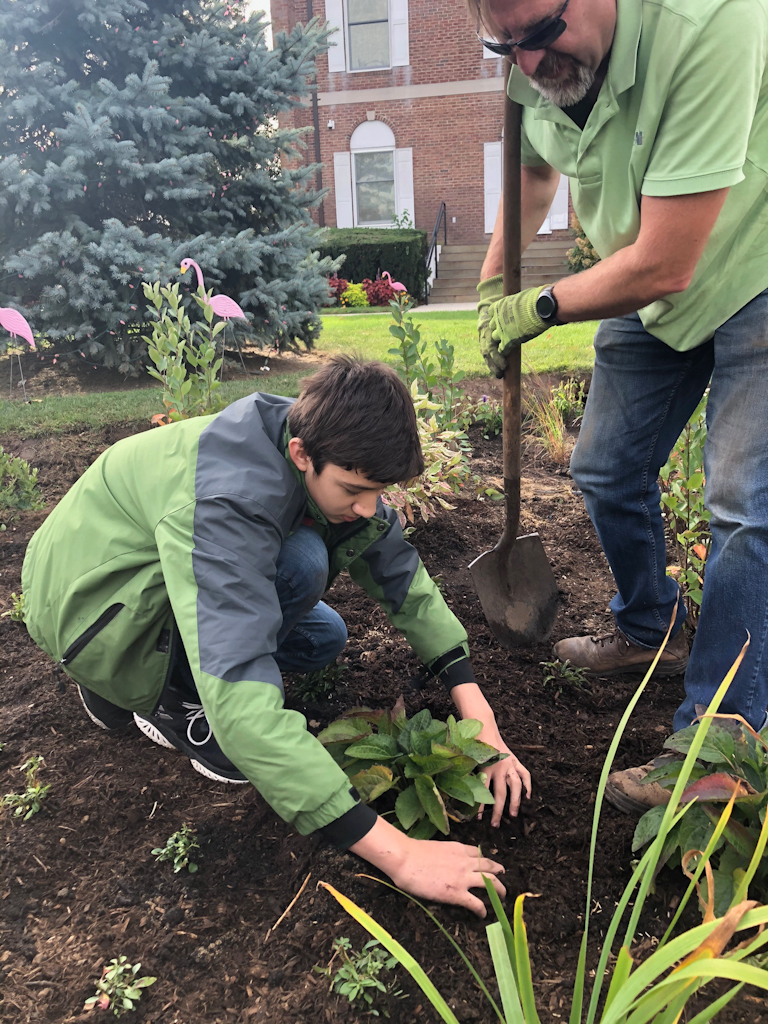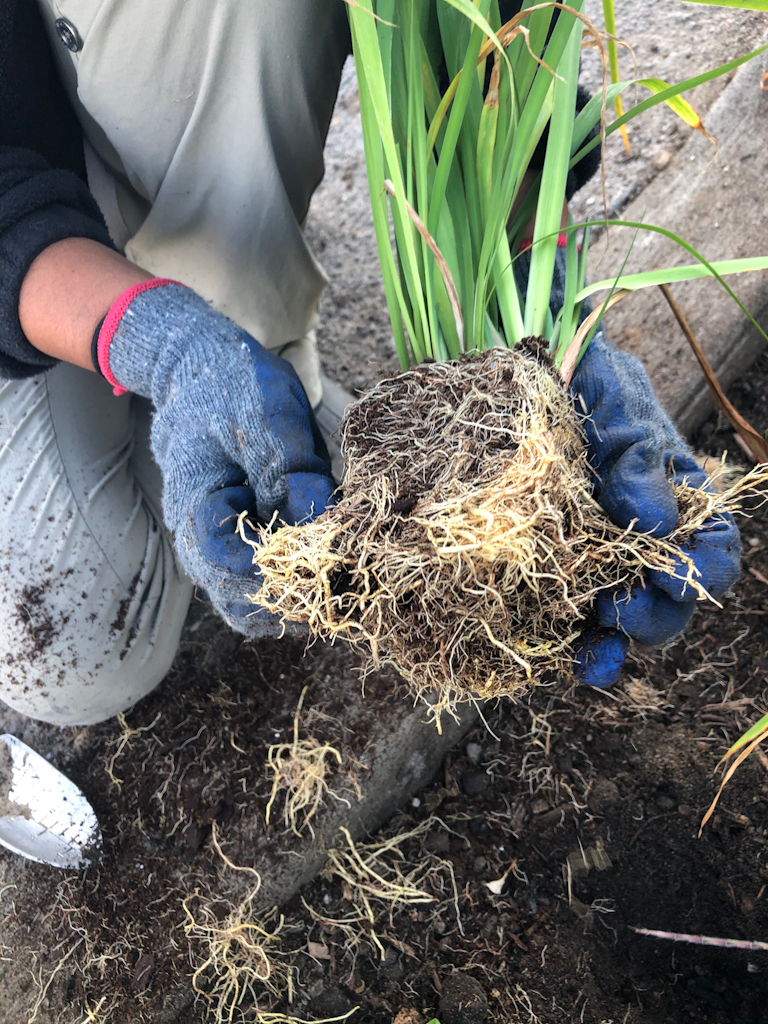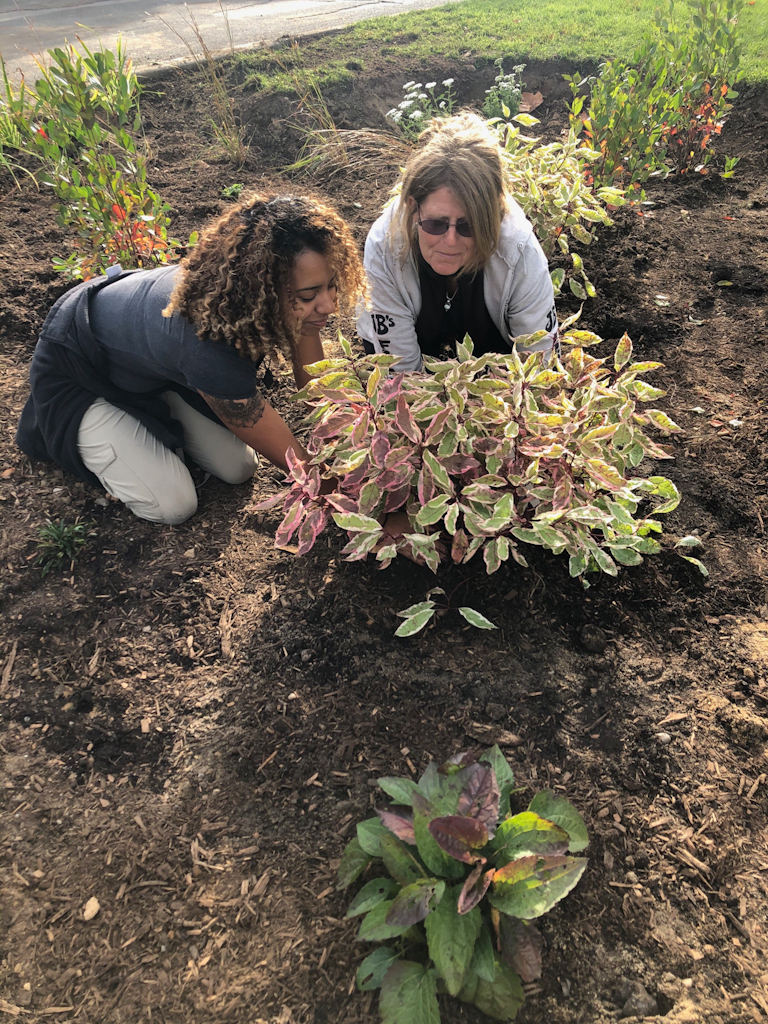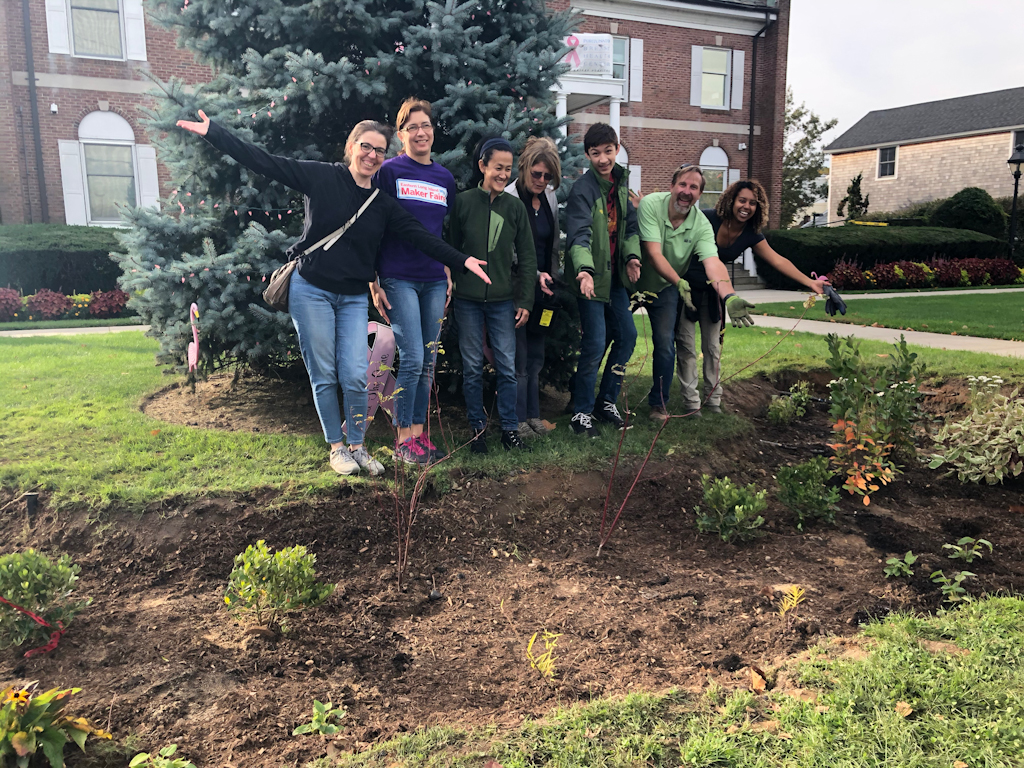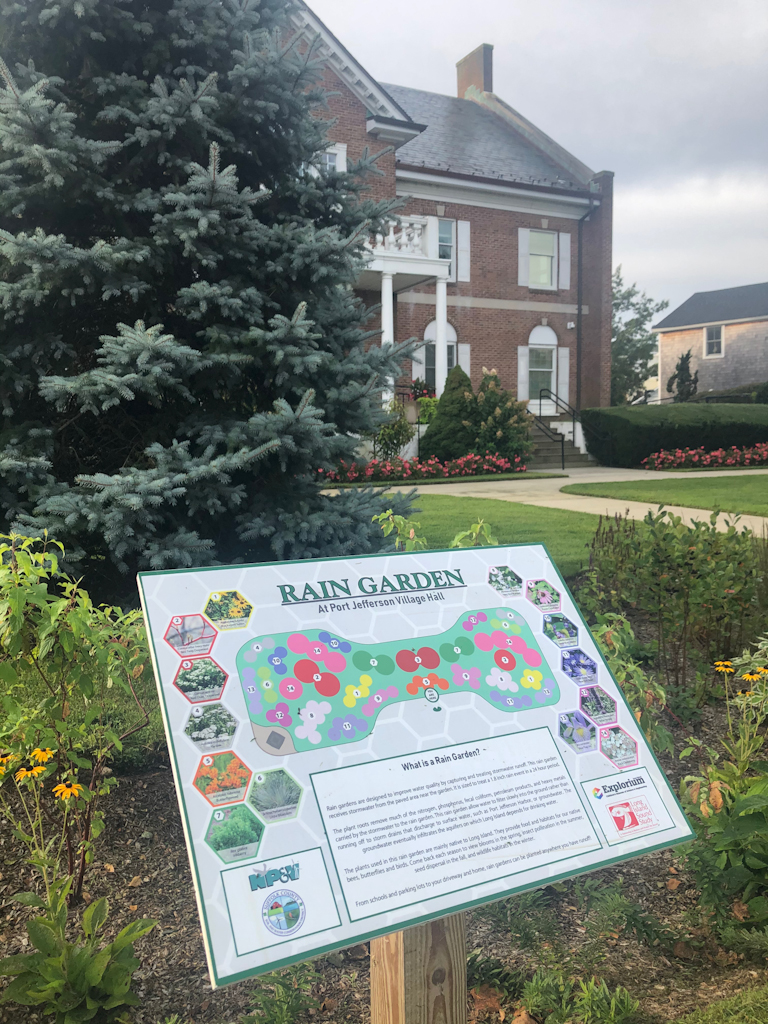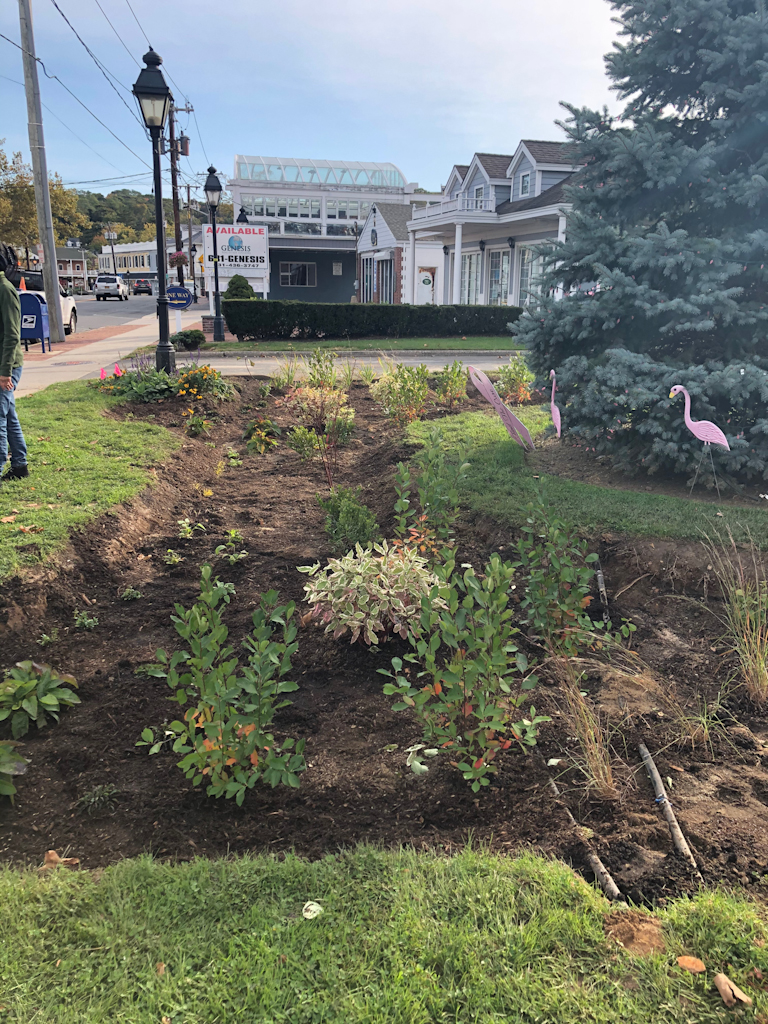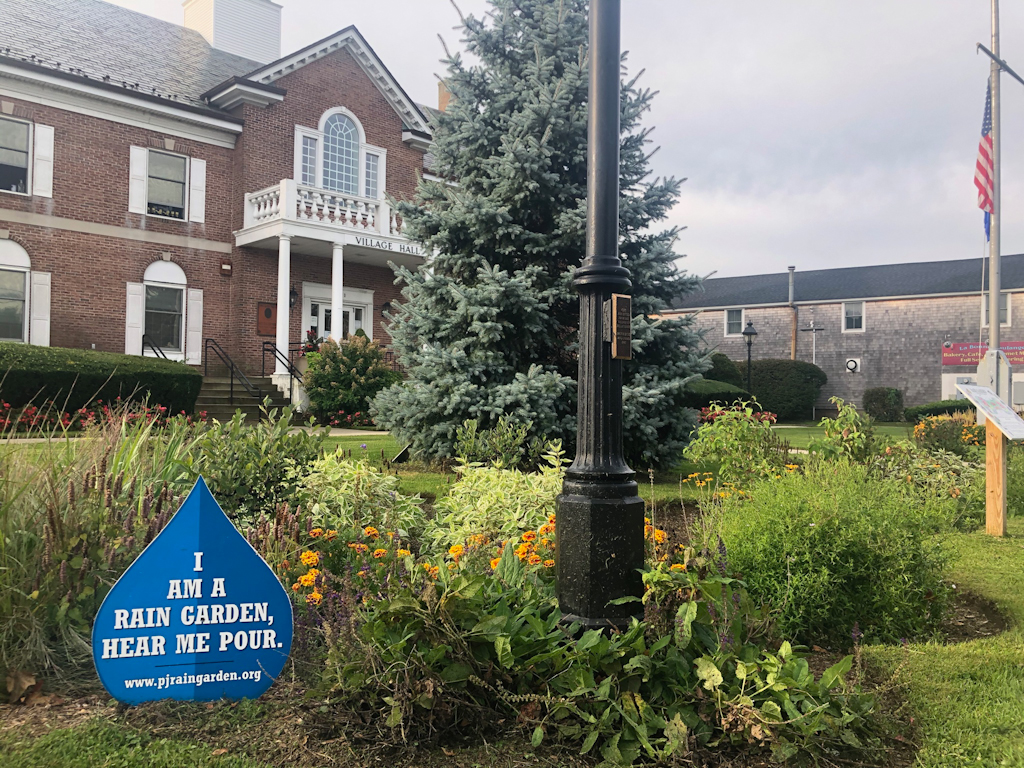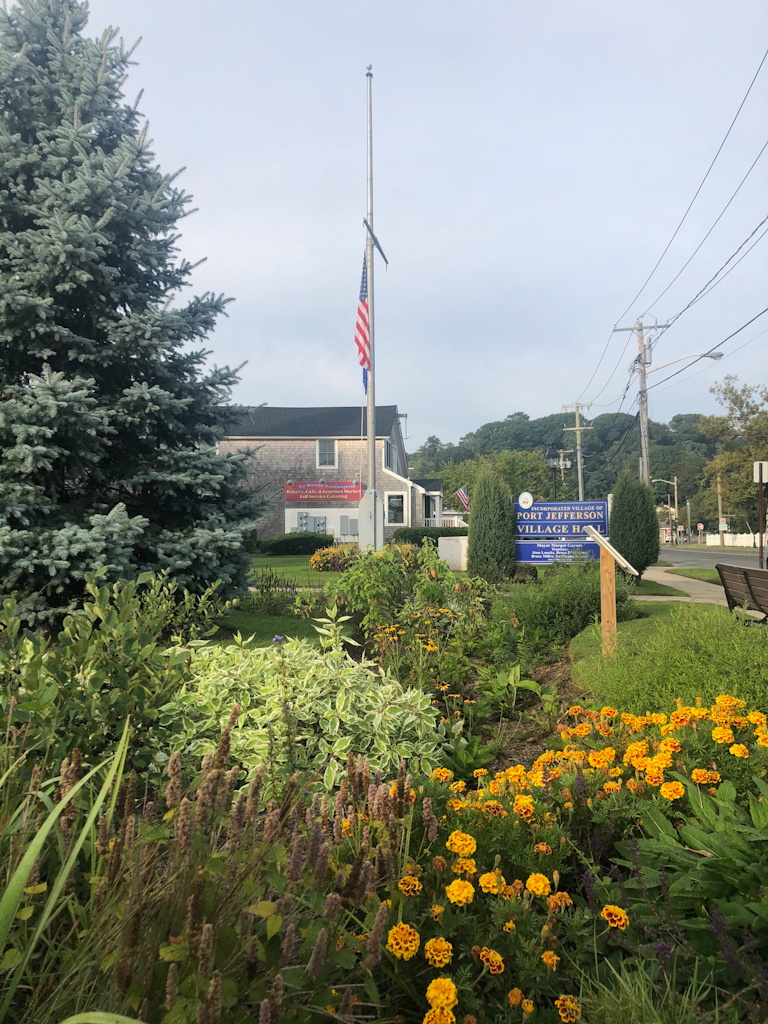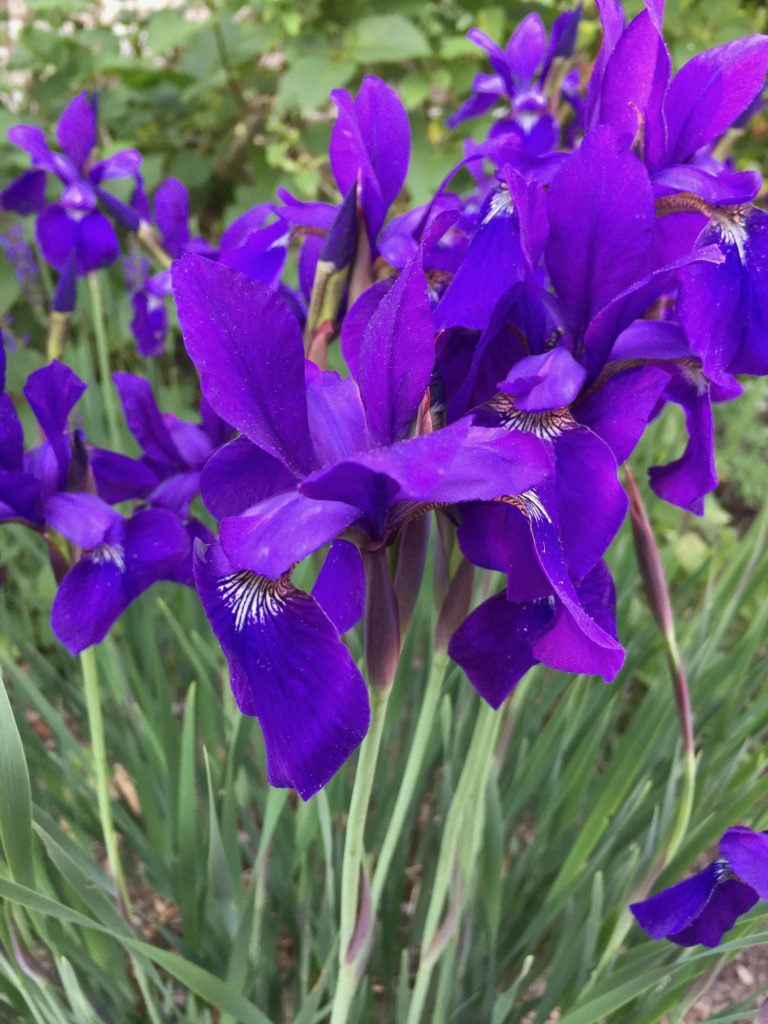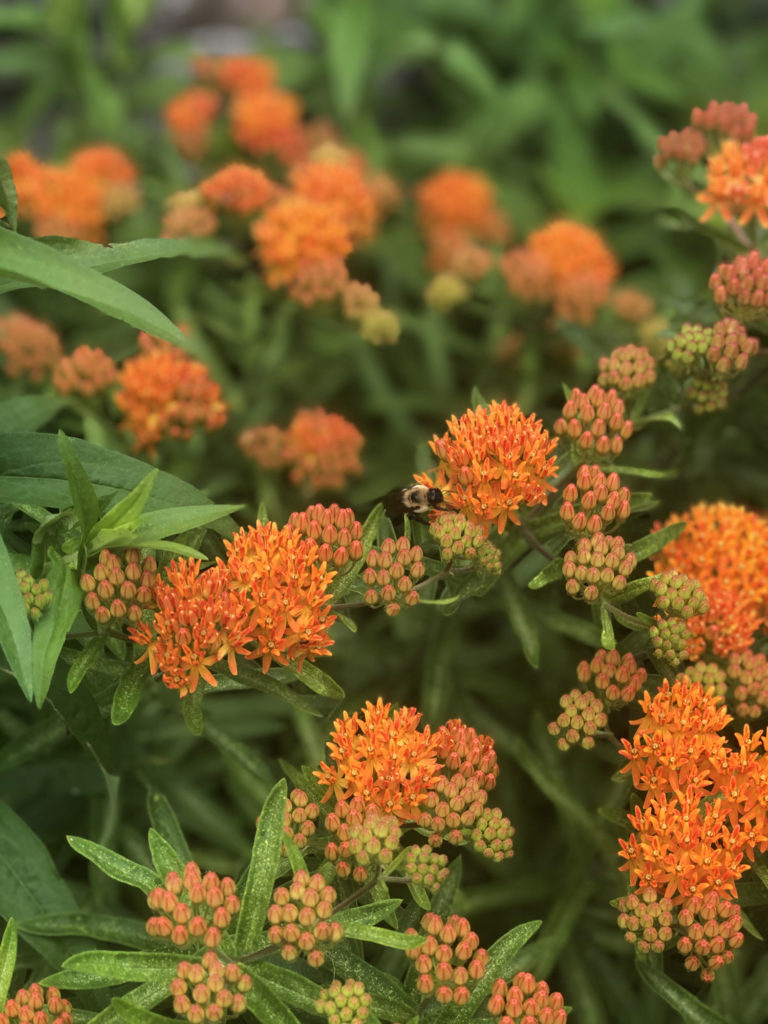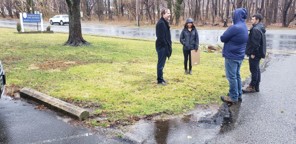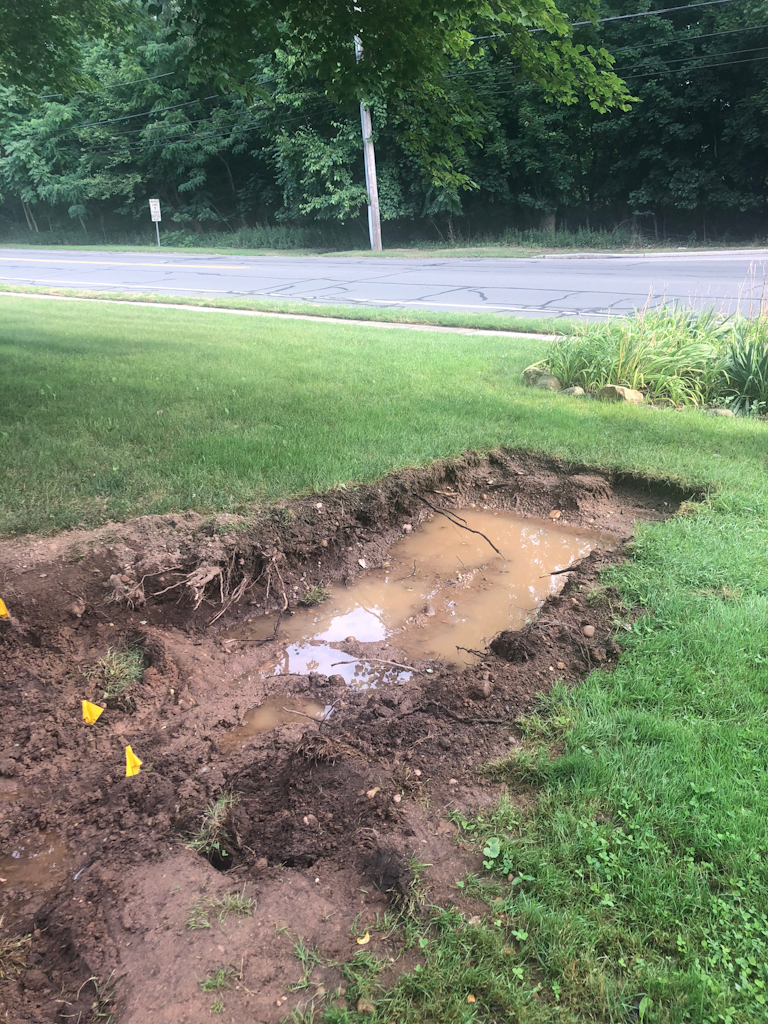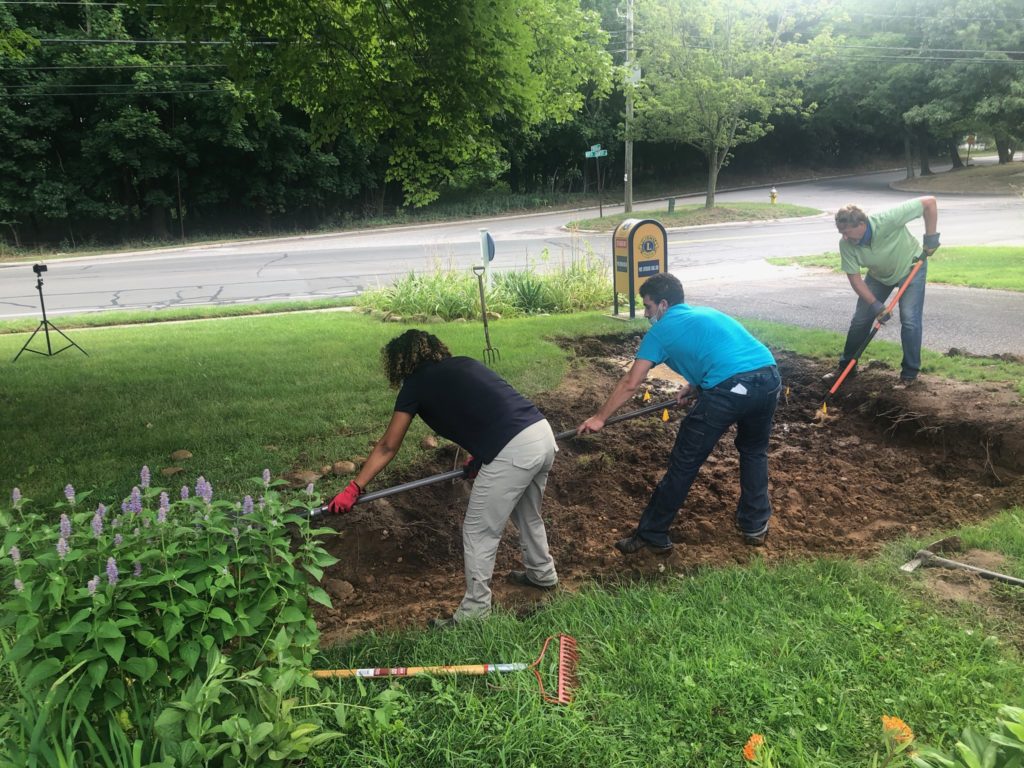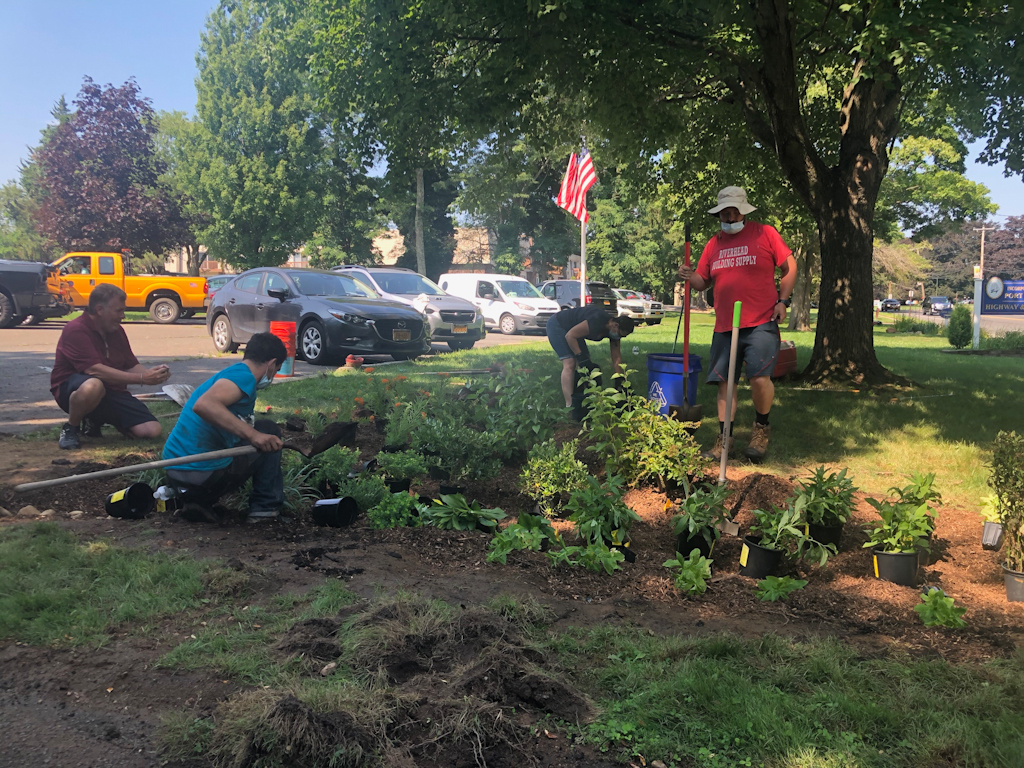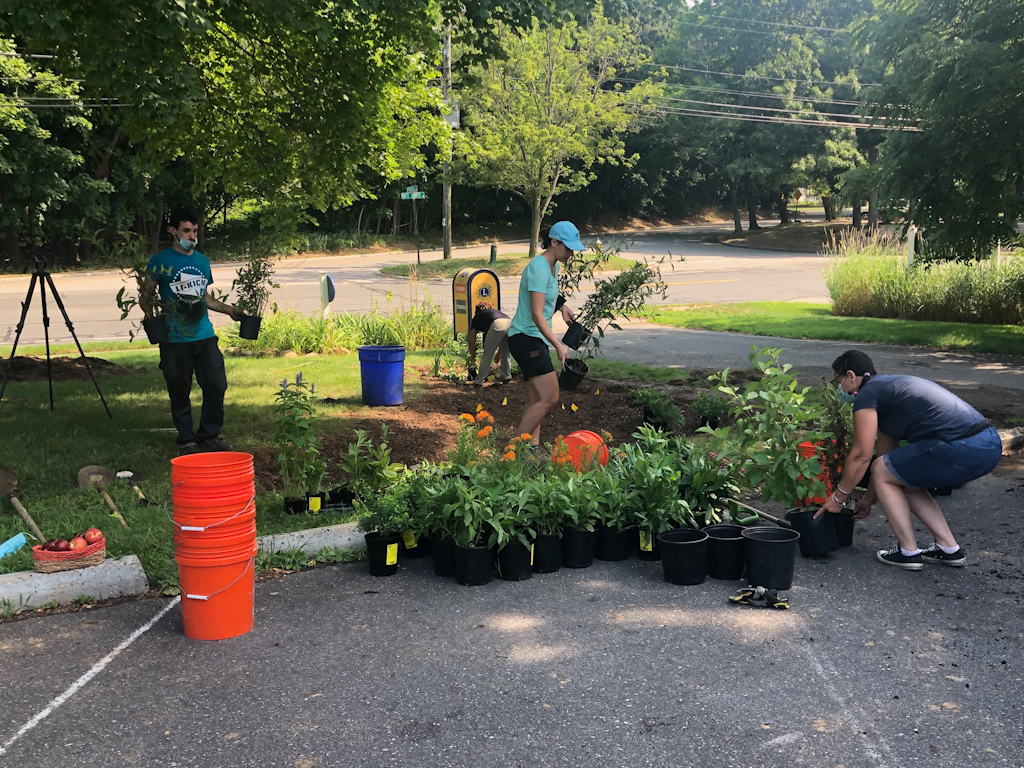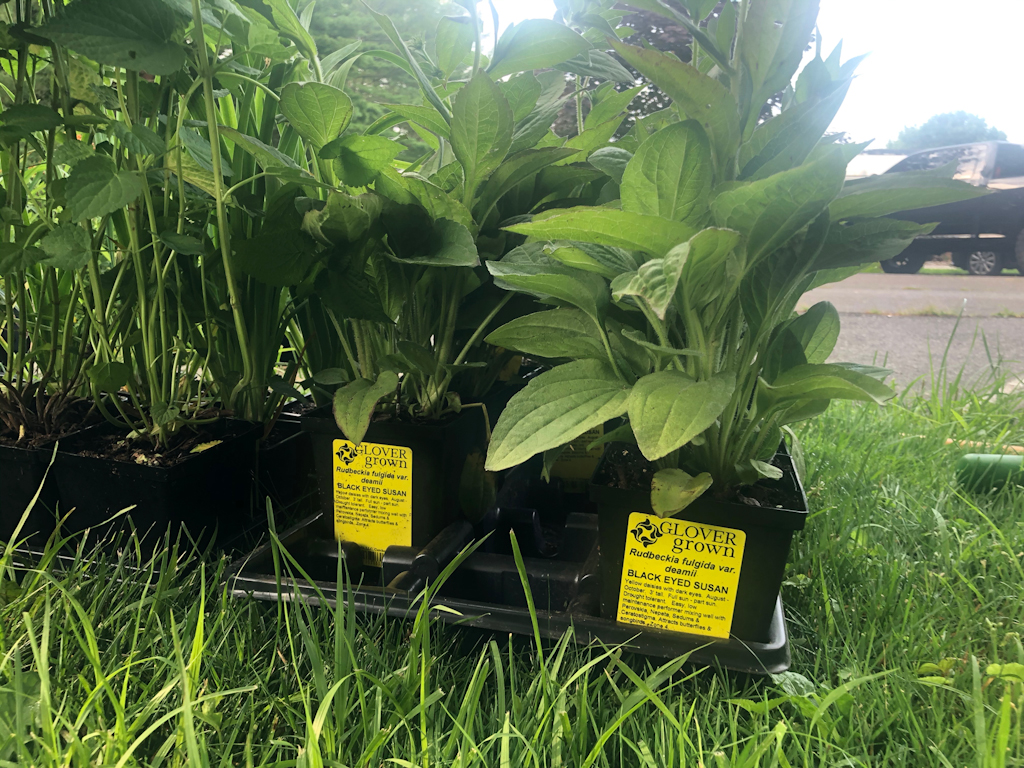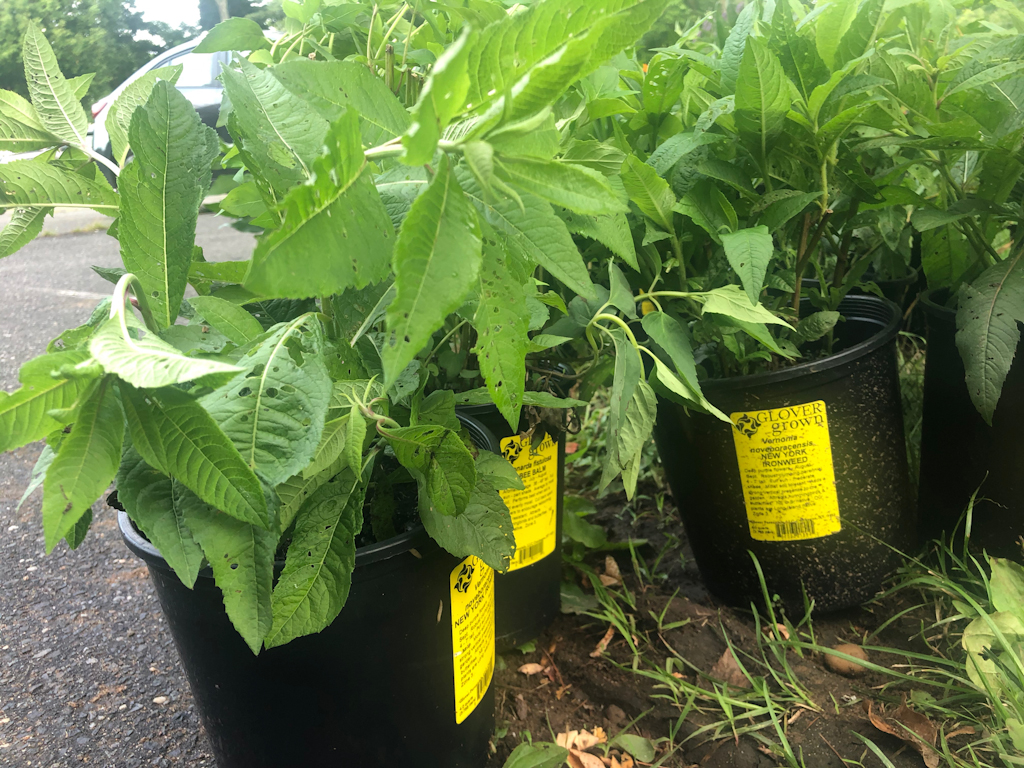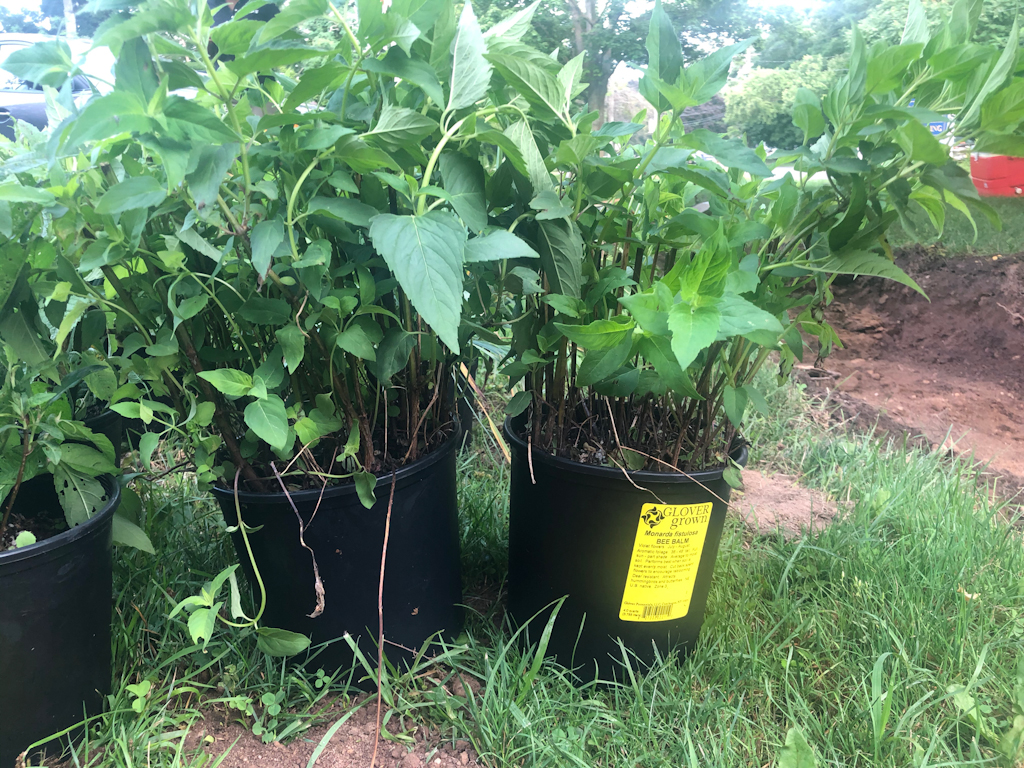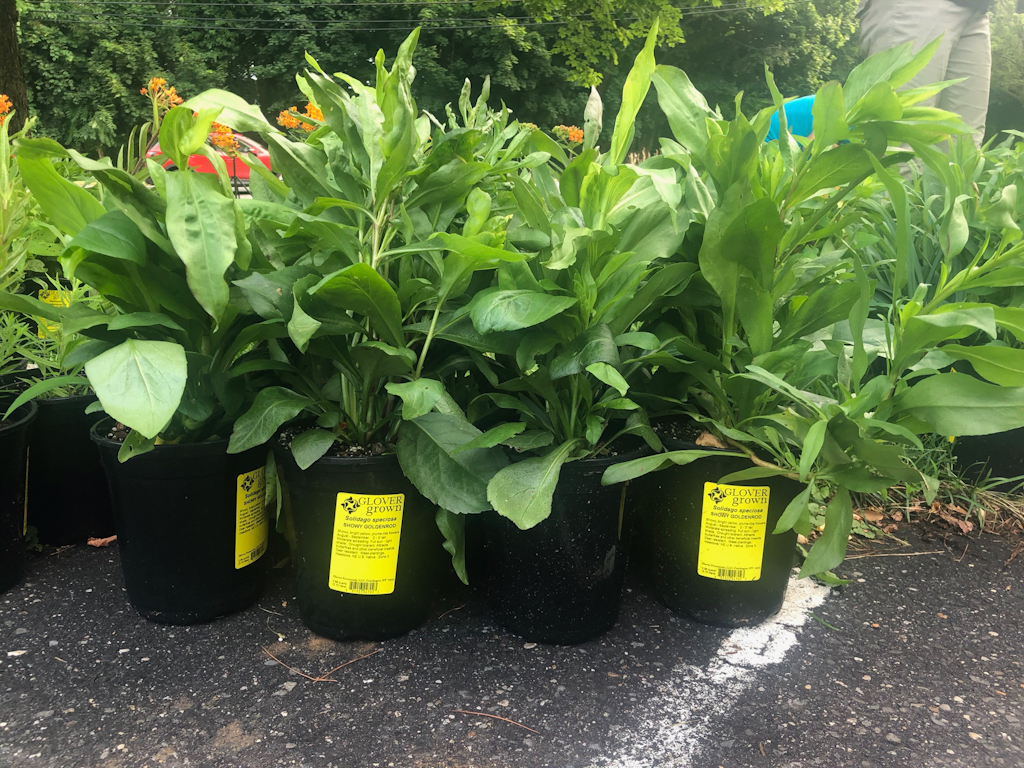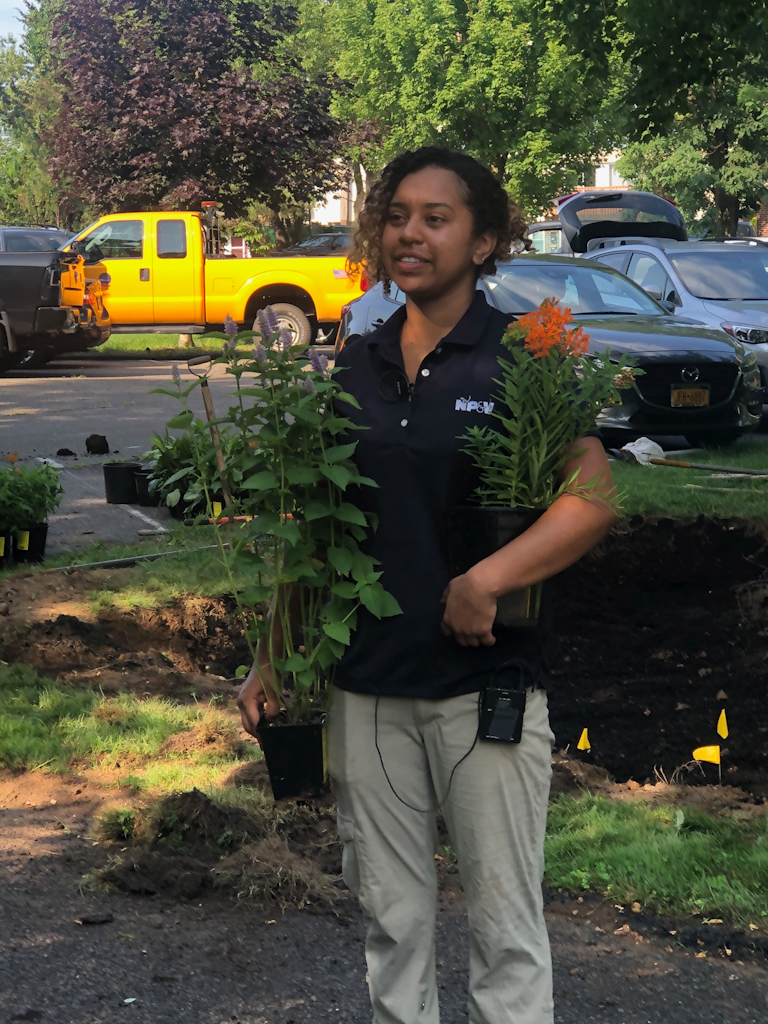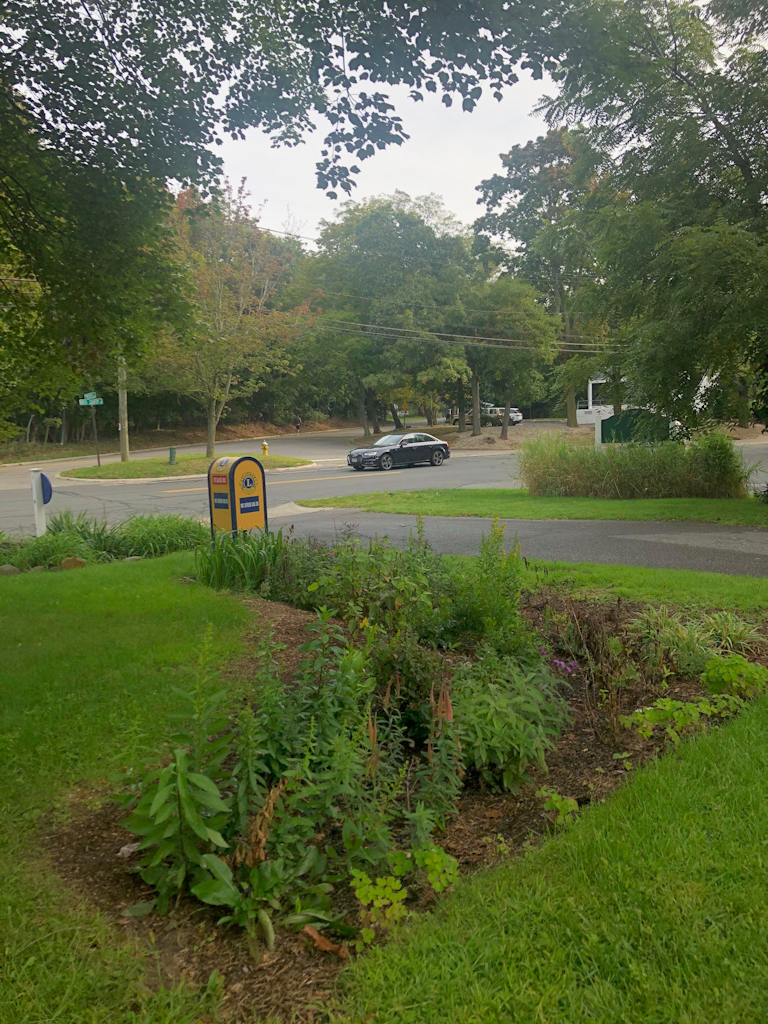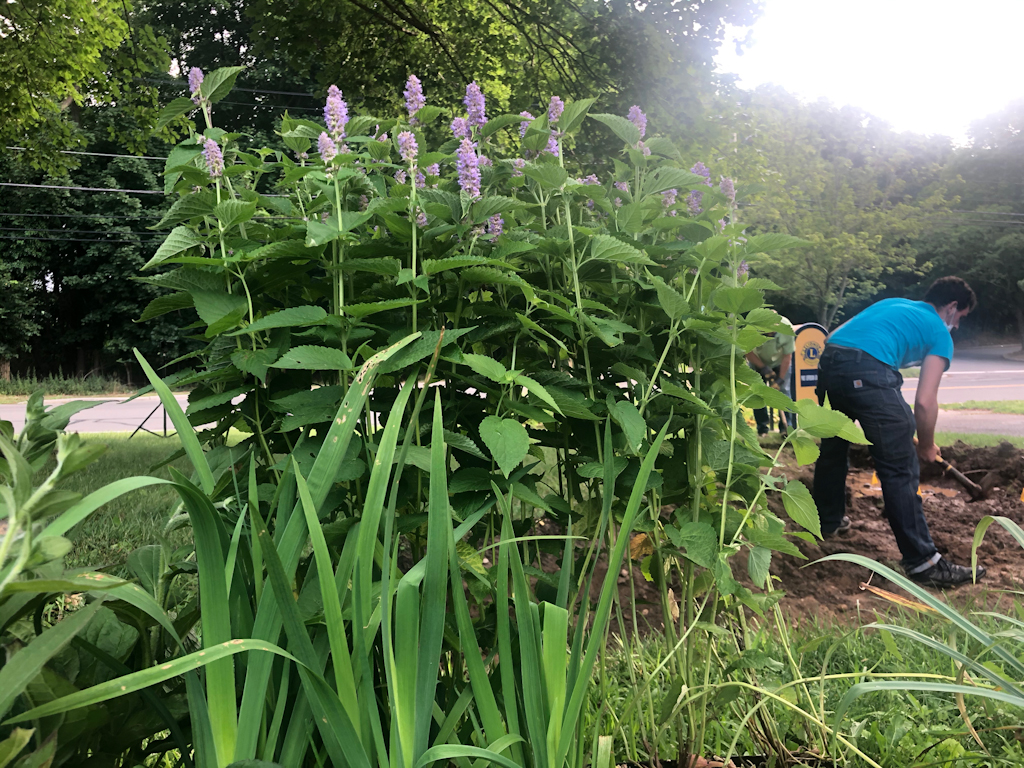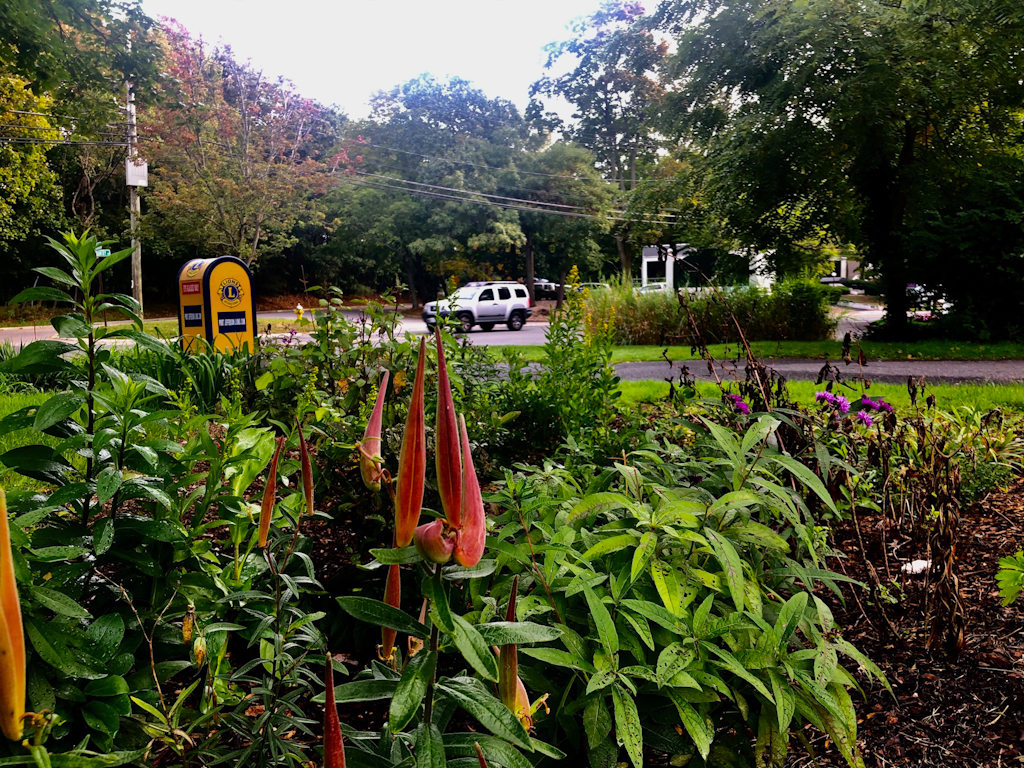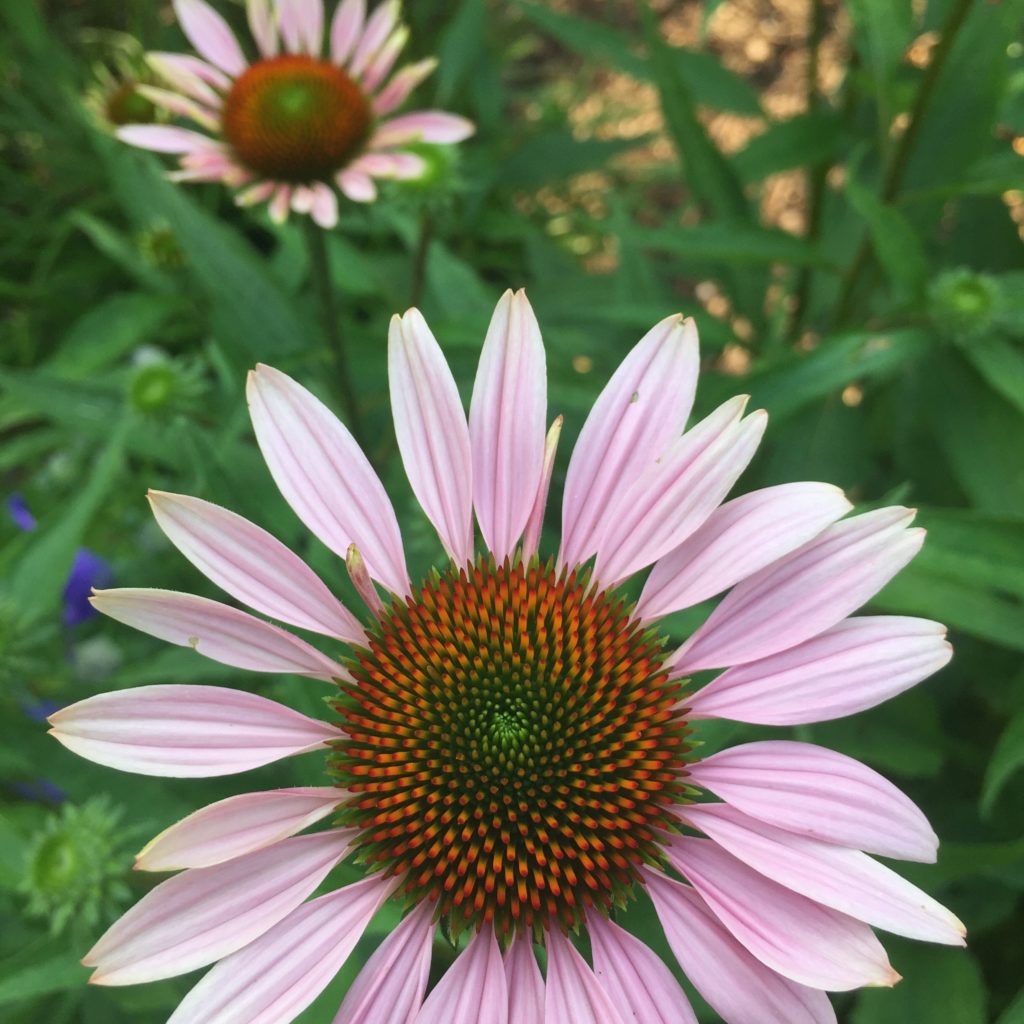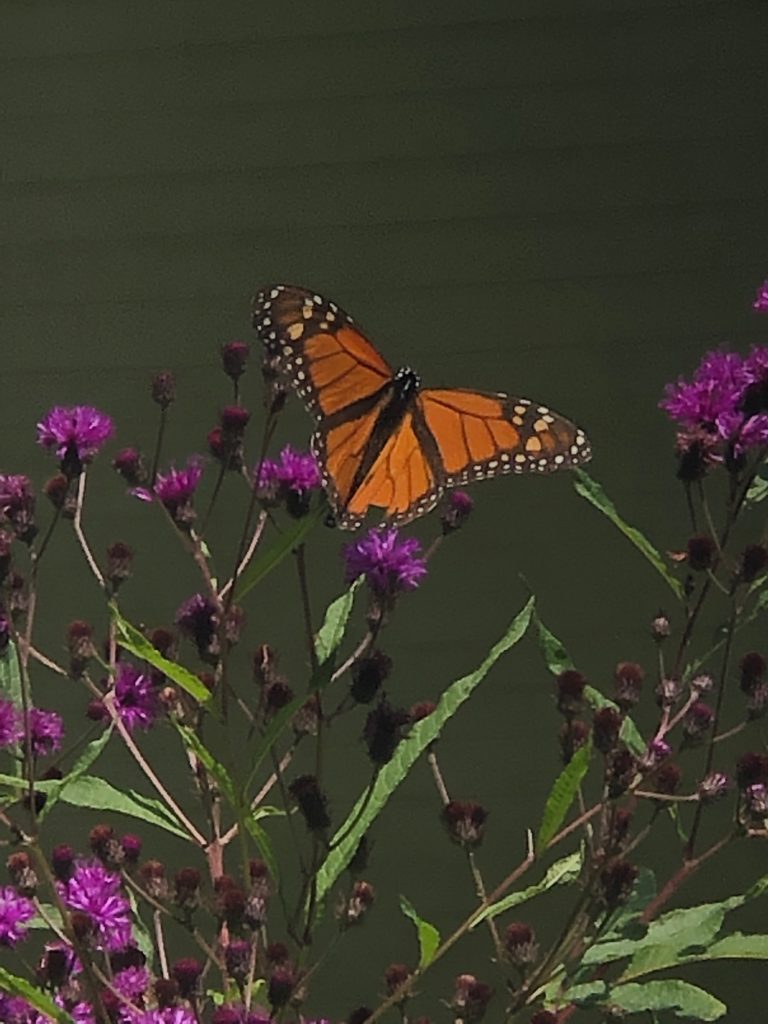Long Island Explorium's Port Jefferson Rain Gardens
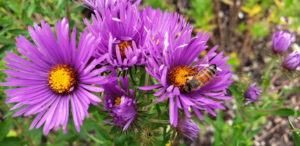
The Port Jefferson Rain Gardens were made possible by a grant to the Long Island Explorium from the Long Island Sound Futures Fund.
"Rain gardens are designed to capture and treat stormwater, by providing drainage and removing pollutants."
Long Island Sound Futures Fund ( LISFF)
Rain Gardens at Port Jefferson Harbor: Linking Water, Wildlife and Waterways (NY)
The Long Island Explorium has installed 3 native plant rain gardens at the Village Center, Village Hall, and Department of Public Works. The rain gardens are located in high-visibility public sites and provide natural landscaping guidance to community members in Port Jefferson. The project demonstrates to visitors and travelers using the Bridgeport-Port Jefferson ferry how rain gardens improve the water quality and biodiversity of Long Island Sound.
With grant funds, Explorium support, and in-kind contributions from Suffolk Country Soil & Water Conservation District, the Village of Port Jefferson, and Suffolk County Master Gardener Volunteer, the Long Island Explorium installed these 3 native plant rain gardens with expertise from Nelson, Pope & Voorhis Environmental Planning Firm.
What is a Rain Garden?
Rain gardens are depressions in the land that are located in areas that can capture water flowing off streets, parking lots, and other pavements. To be most effective, rain gardens are planted with native plants that help to remove pollutants from the water flowing into it. From schools and parking lots to your driveway or sidewalks at home, rain gardens can be planted anywhere you have water runoff!
Click on the Educational Video to learn more.
Rain gardens are designed to capture and treat stormwater by providing drainage and removing pollutants. The Village Center rain garden receives stormwater from the paved area near the garden, and the Village Hall and Public Works rain gardens receive stormwater from their active driveways.
The roots of the native plants treat or remove the nitrogen, phosphorus, fecal coliform and suspended solids carried by the stormwater to the rain garden. Rain gardens allow water to filter slowly into the ground rather than running off to storm drains that discharge to surface water (such as the Port Jefferson Harbor that supports so much wildlife) or to groundwater (which we eventually drink). After passing through a rain garden, the harmful products and bacteria originally within the stormwater have been absorbed by the plants and drain out of the rain garden cleaner than it entered.
Click on the 11 blue raindrop signs below to learn more.
Jump to the:
Village Center, Village Hall, and Public Works Installations.
Responsible Planting
Aim beyond 70% NATIVE!
According to a study done by researchers from the University of Delaware and the Smithsonian, we can restore the insects and birds necessary for sustaining the health of the planet by planting at least 70 percent native plants.
Here at the Long island Explorium, we plant outside in our sensory gardens and rain gardens with native plants. Inside, we enjoy ornamentals all year long.
List of Plants for the Rain Gardens: Village Center Location
| Scientific Names | Common Names |
| Achillea millefolium | Yarrow |
| Asclepias tuberosa | Butterfly Milkweed |
| Echinacea purpurea | Purple Coneflower |
| Monarda fistulosa | Bee Balm |
| Penstemon digitalis | Smooth Penstemon |
| Rudbeckia fulgida 'Goldsturm | Black-eyed Susan |
| Aster novae-belgii | New York Aster |
| Schizachyrium scoparium | Little Blue Stem |
| Zizia aurea | Golden Alexanders |
| Cornus alba "Ivory Halo" | Tatarian Dogwood |
| Ilex glabra | Inkberry |
| Itea virginica 'Henry's Garnet' | Virginia Sweetspire |
Village Center Photos of Our Rain Garden Installation & Native Plants from Long Island
Village Hall List of Plants for the Rain Gardens
| Scientific Names | Common Names |
| Agastache foeniculum | Anise Hyssop |
| Achillea millefolium | Yarrow |
| Asclepias tuberosa | Butterfly Milkweed |
| Echinacea purpurea | Purple Coneflower |
| Iris versicolor | Blue Flag Iris |
| Lobelia siphilitica | Great Blue Lobelia |
| Penstemon digitalis | Smooth Penstemon |
| Rudbeckia fulgida 'Goldsturm | Black-eyed Susan |
| Aster novae-belgii | New York Aster |
| Schizachyrium scoparium | Little Blue Stem |
| Zizia aurea | Golden Alexanders |
| Aronia melanocarpa | Black Chokeberry |
| Cornus sericea 'Arctic Fire' | Red Twig Dogwood |
| Ilex glabra | Inkberry |
| Cornus alba "Ivory Halo" | Tatarian Dogwood |
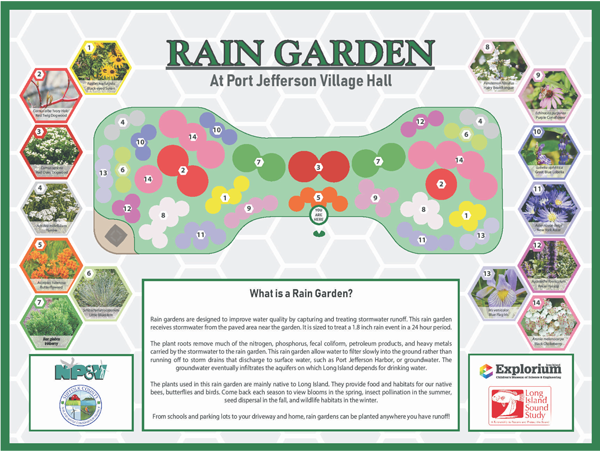
Village Hall Photos of Our Rain Garden Installation & Native Plants from Long Island
Public Works List of Plants for the Rain Gardens
| Scientific Names | Common Names |
| Achillea millefolium | Common Yarrow |
| Echinacea purpurea | Eastern Purple Coneflower |
| Lobelia siphilitica | Great Blue Lobelia |
| Aquilegia canadensis | Red Columbine |
| Chelone glabra | White Turtlehead |
| Cornus stolonifera | Redosier Dogwood |
| Alex glabra compacta |
Inkberry |
| Itea virginica |
Sweetspire |
| Agastache foeniculum |
Blue Giant Hyssop |
| Asclepia tuberosa |
Milkweed |
| Baptisia tinctoria |
Yellow False Indigo, Wild Indigo, Wild-indigo and Horseflyweed |
| Carex laxiculmis | Spreading Sedge |
| Monarda fistulosa | Wild Bergamot |
| Penstemon hirsutus | Hairy Beardtongue |
| Rudbeckia fulgida | Orange Coneflower |
| Solidago speciosa | Showy Goldenrod |
| Verononia noveboracensis | New York Ironweed |
